May 19, 2019
Martha O'Kennon
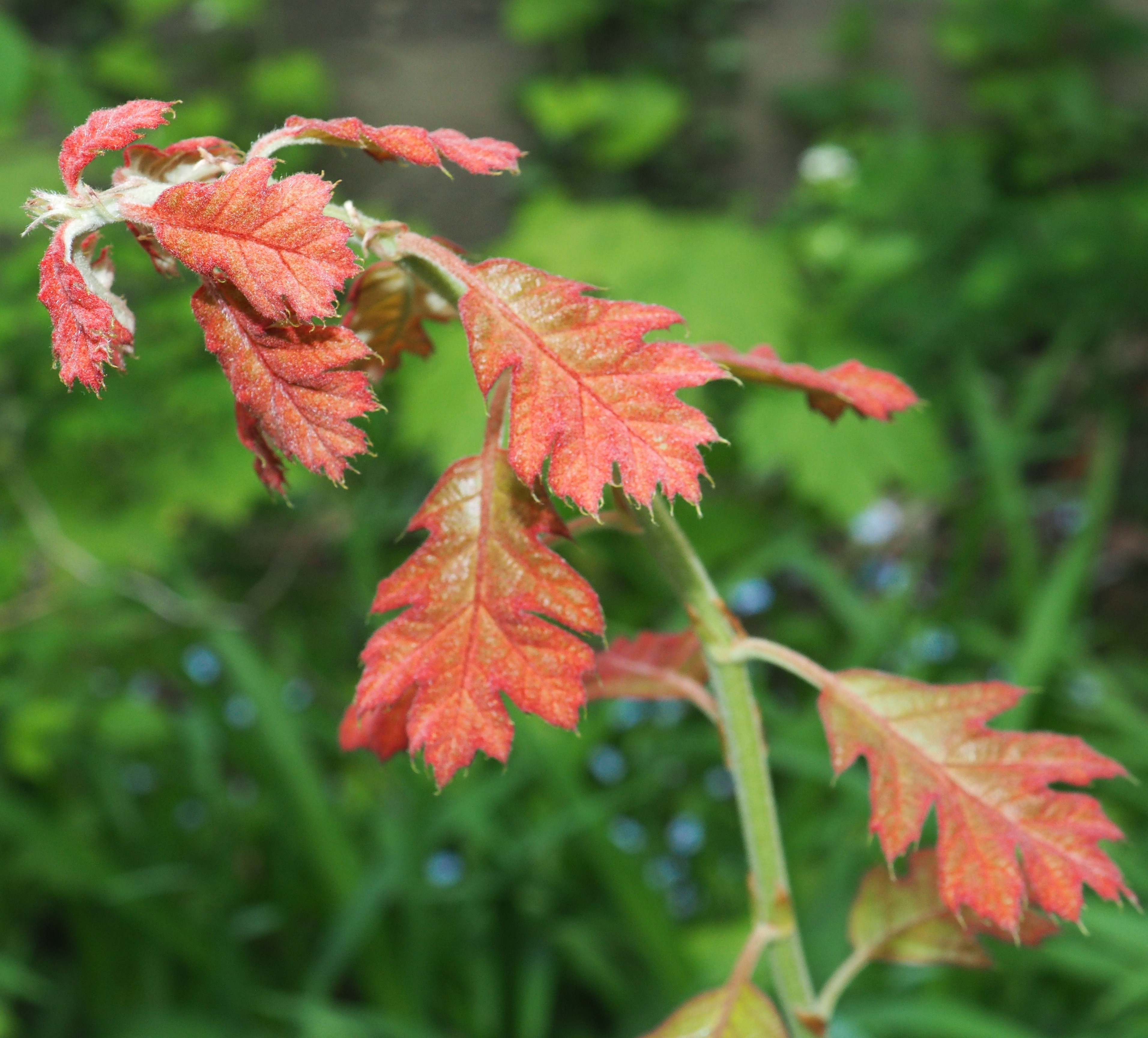
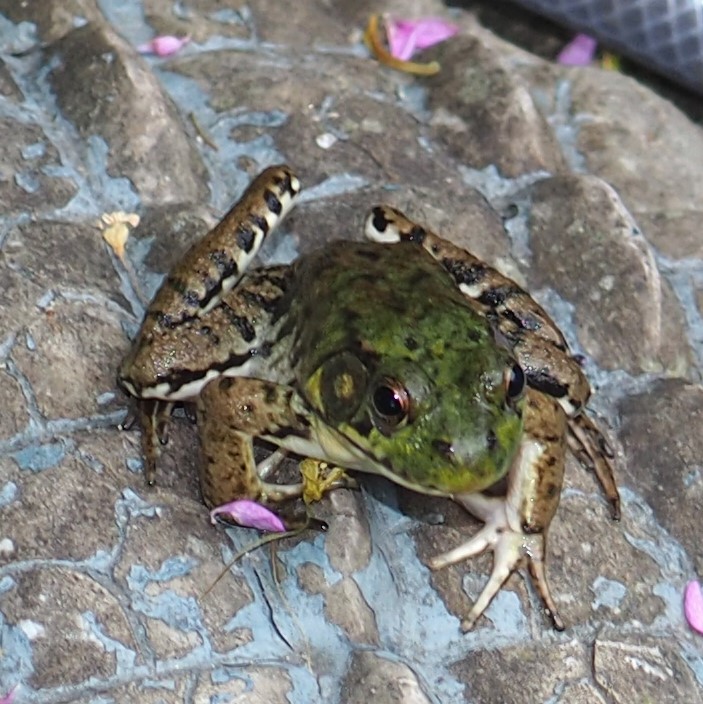
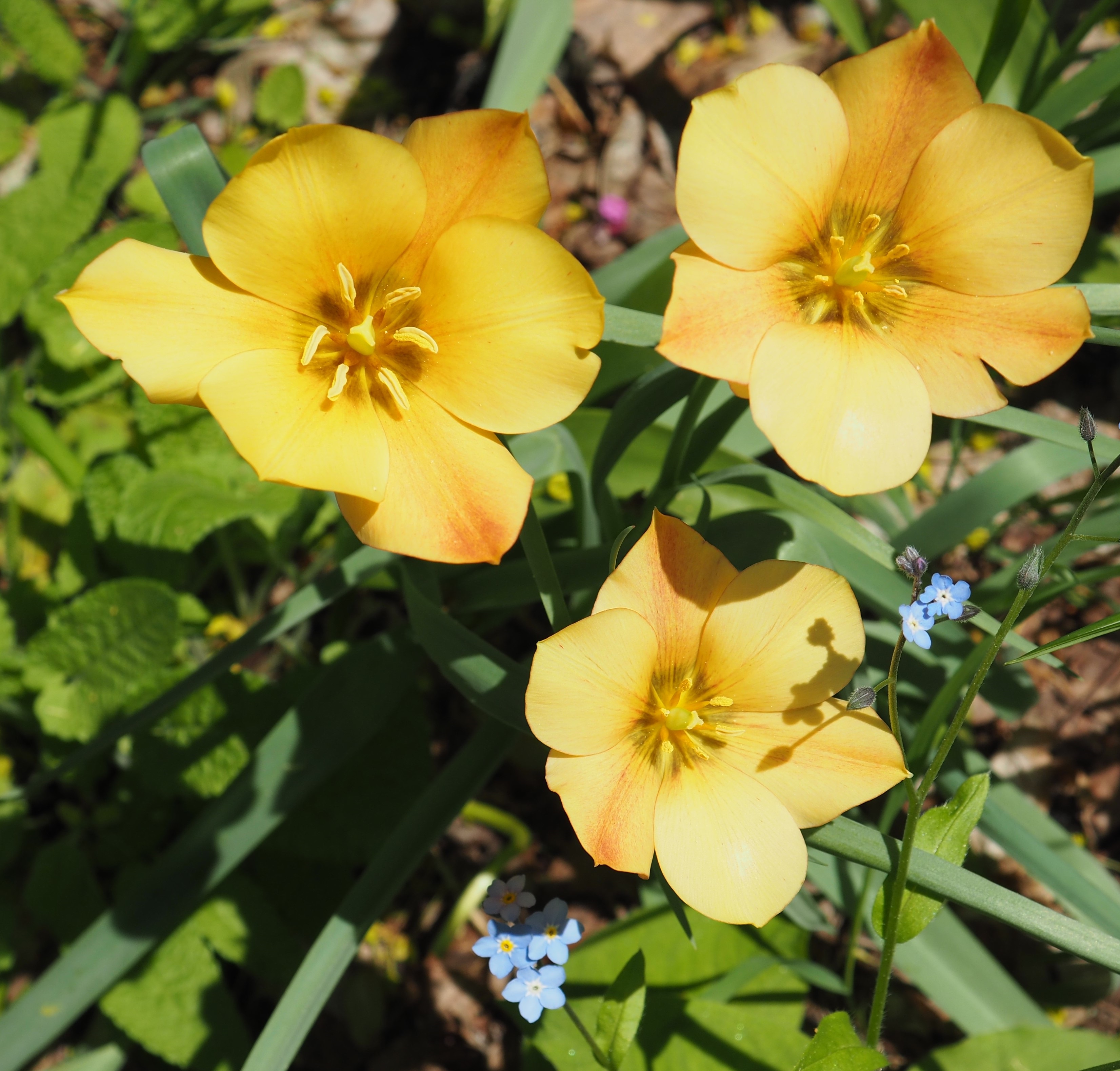
You may not think Froggy is a flower, but he is certainly beautiful. Now we can see that he has grown up somewhat. He's flanked by a spray of tiny red Oak leaves, not Red Oak leaves but red anyway, and some of the peachy little tulips, now fully open.
Remember that there is information in the name of the file for each image. You can see it by mousing over the image - look at the lower left of the screen. Or you can click on the image to get to the (usually) larger image. Then the info is displayed in the address line above. Sometimes the second click will actually display a different view of the original image.
Summer must be a-cumin in. Yesterday my cleaning expert noticed tiny little ants a-cumin in under the woodwork next to the cat's wet-food dish. Fortunately my extensive training had taught me that that heart-shaped abdomen signaled an Acrobat Ant! Then a few minutes later I spotted two of what seem to be Eastern Black Carpenters on the stovetop next to the place I had just been making Lemon Pudding. That yellowish stain may indeed be a badly wiped-up bit of pudding. But maybe they were another of the sugar-loving Carpenters. Collapsing from the excitement of discovering some of my outdoor friends indoors, I then spied what is certainly a kind of Carpenter on the wall of my bedroom.

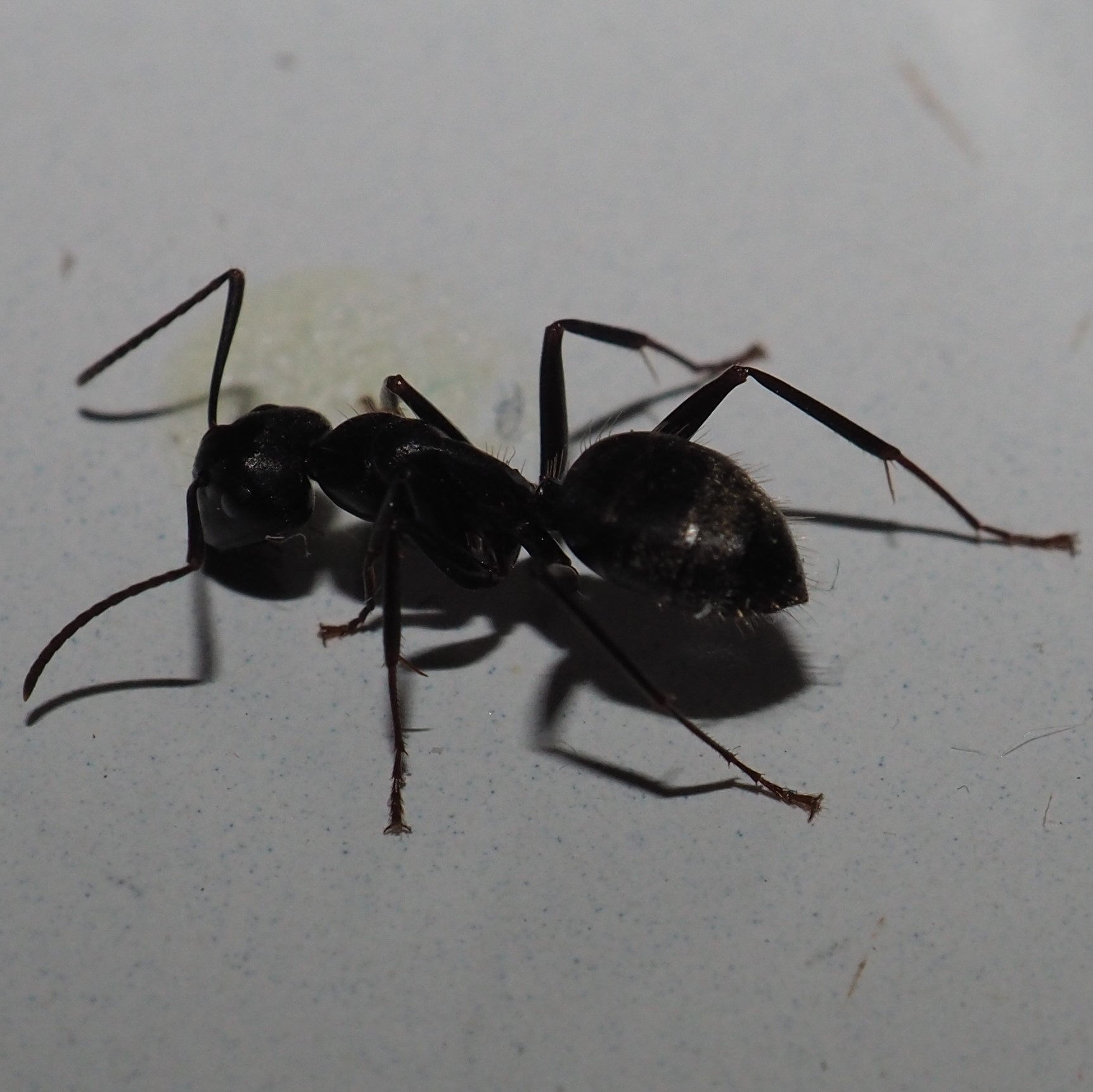
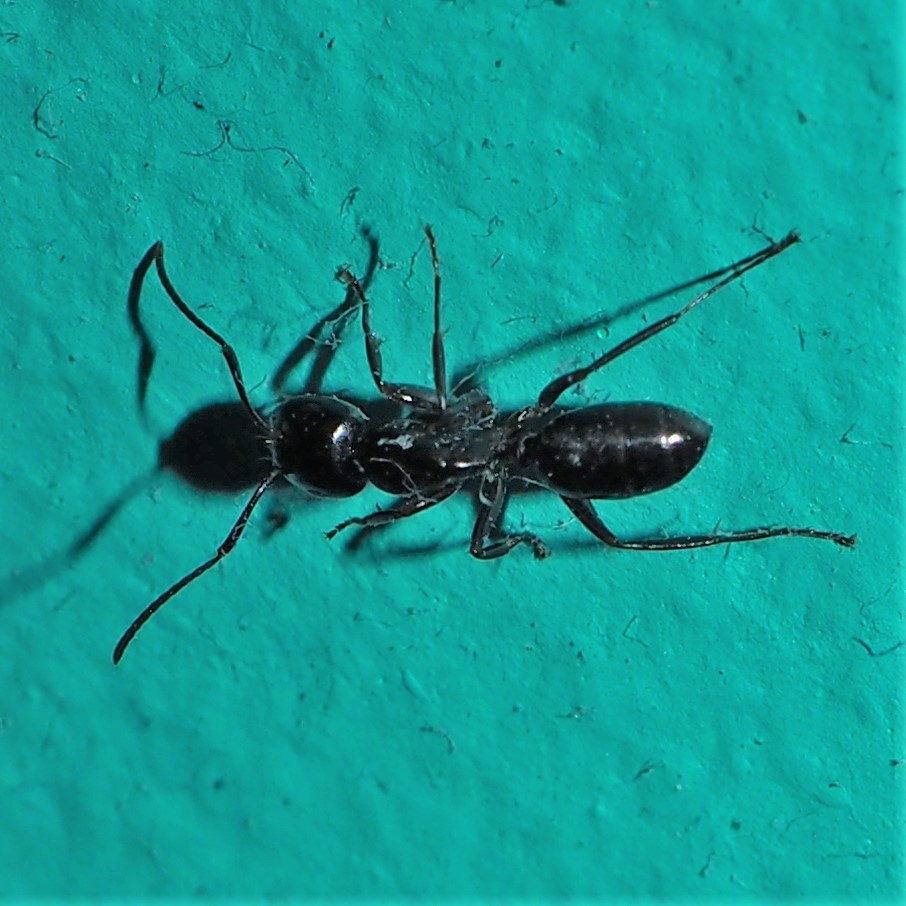
Outside by the pond, here is another Eastern Black Carpenter Ant. Then a Small Honey Ant on the siding. Last is one of those puzzling ones: possibly a Smaller Carpenter or possibly something else. It certainly has a lot of red on it.
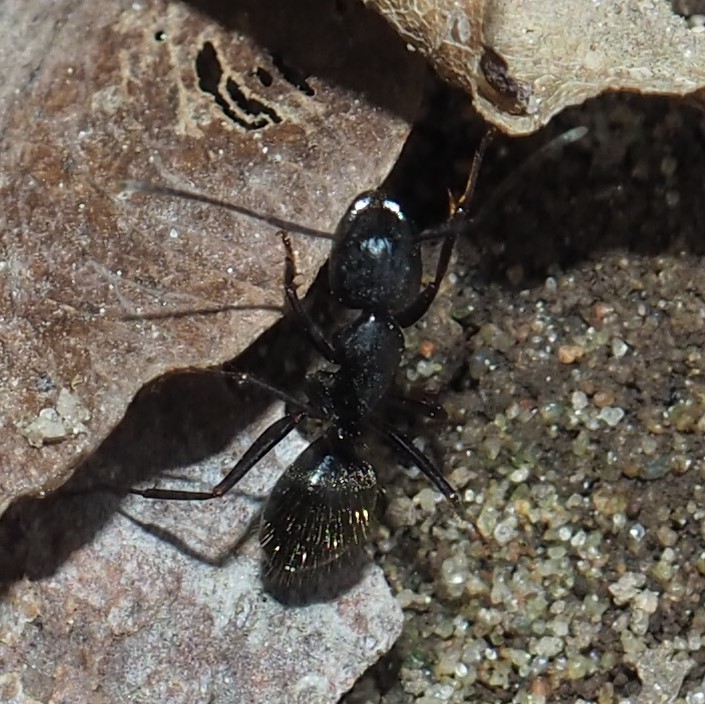
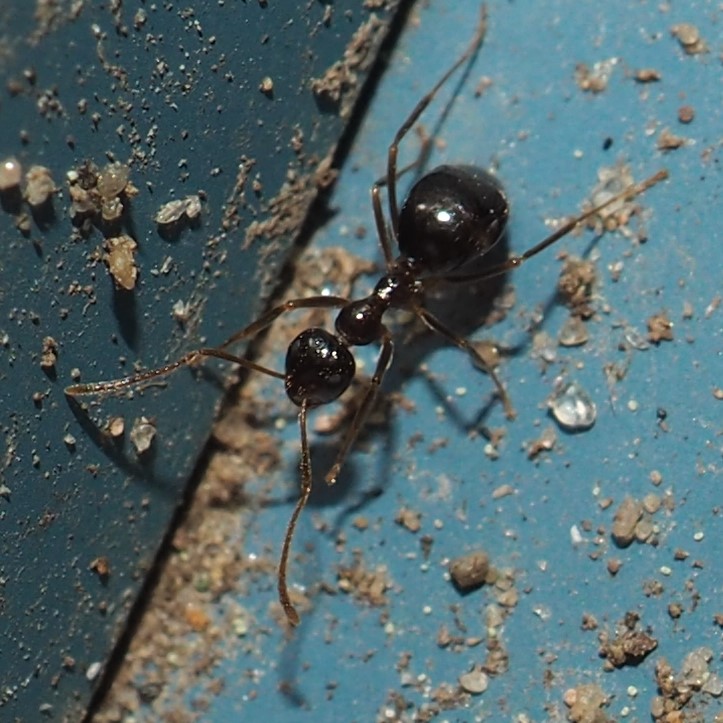
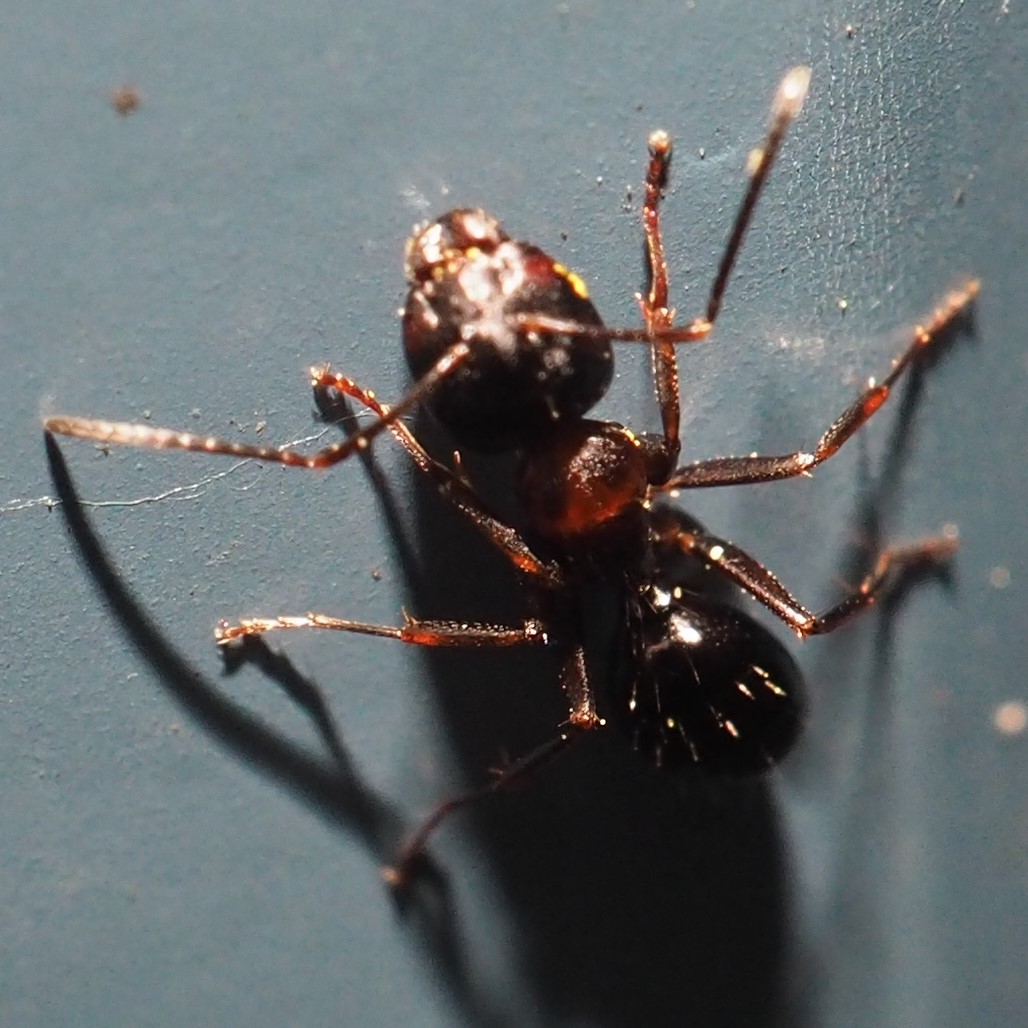
The forget-me-nots seem to attract more bees than we had been seeing before the FMN's started blooming. This first bee is Dunning's Mining Bee (Andrea dunningi). Second seems to be our old friend the Western Honey Bee. And of course this Bumble Bee loves the forget-me-nots too.

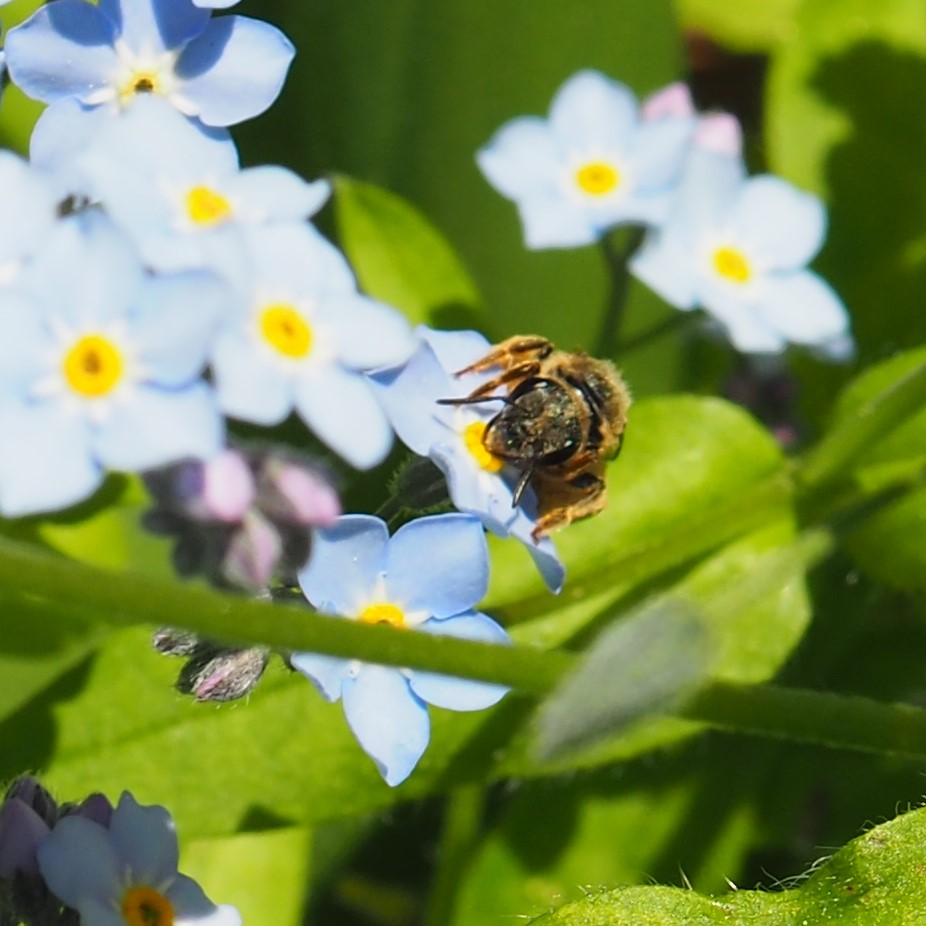
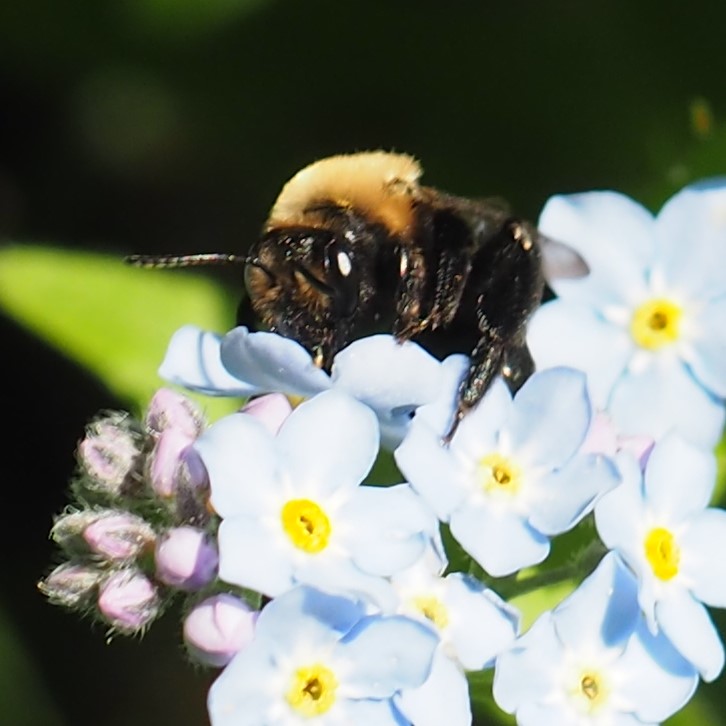
The Golden Wood Poppies also attract their share of bees. Number 1 is a mystery to me, though I might recognize it if more than an abdomen were showing. The second bee may be the same as the first. The blooming redbud is also doing its share to attract these pollinators, and I think it is hosting an ordinary Western Honey Bee.
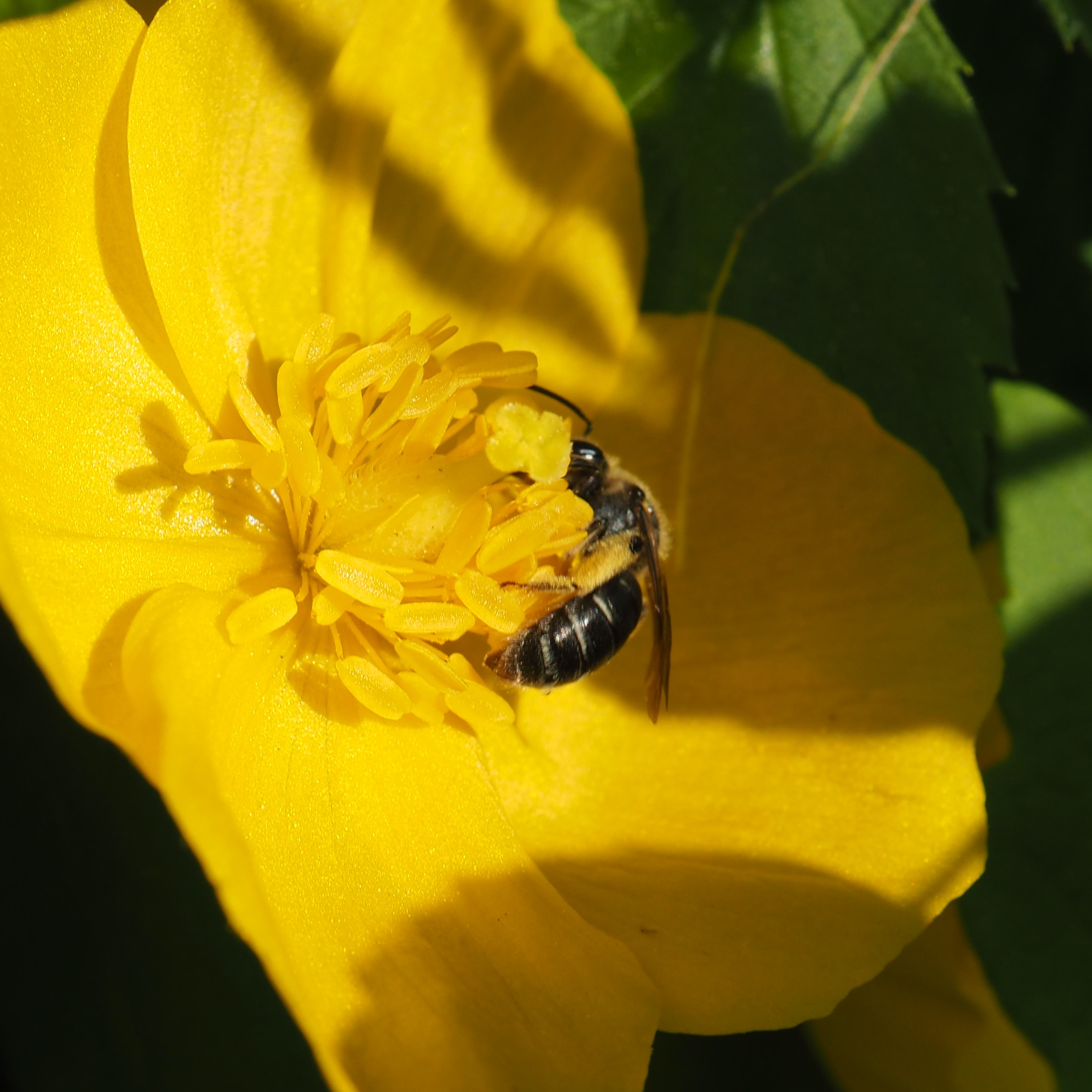
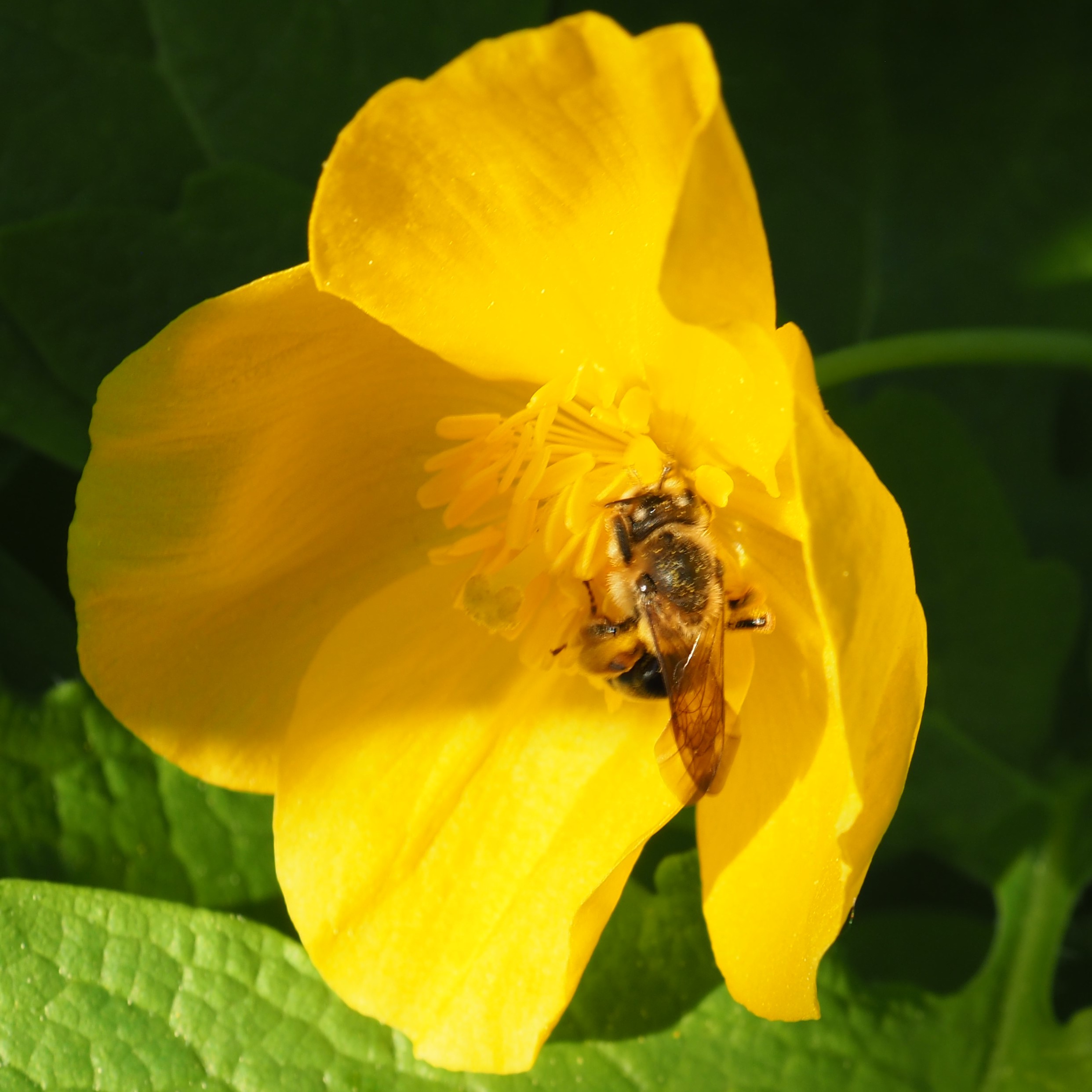
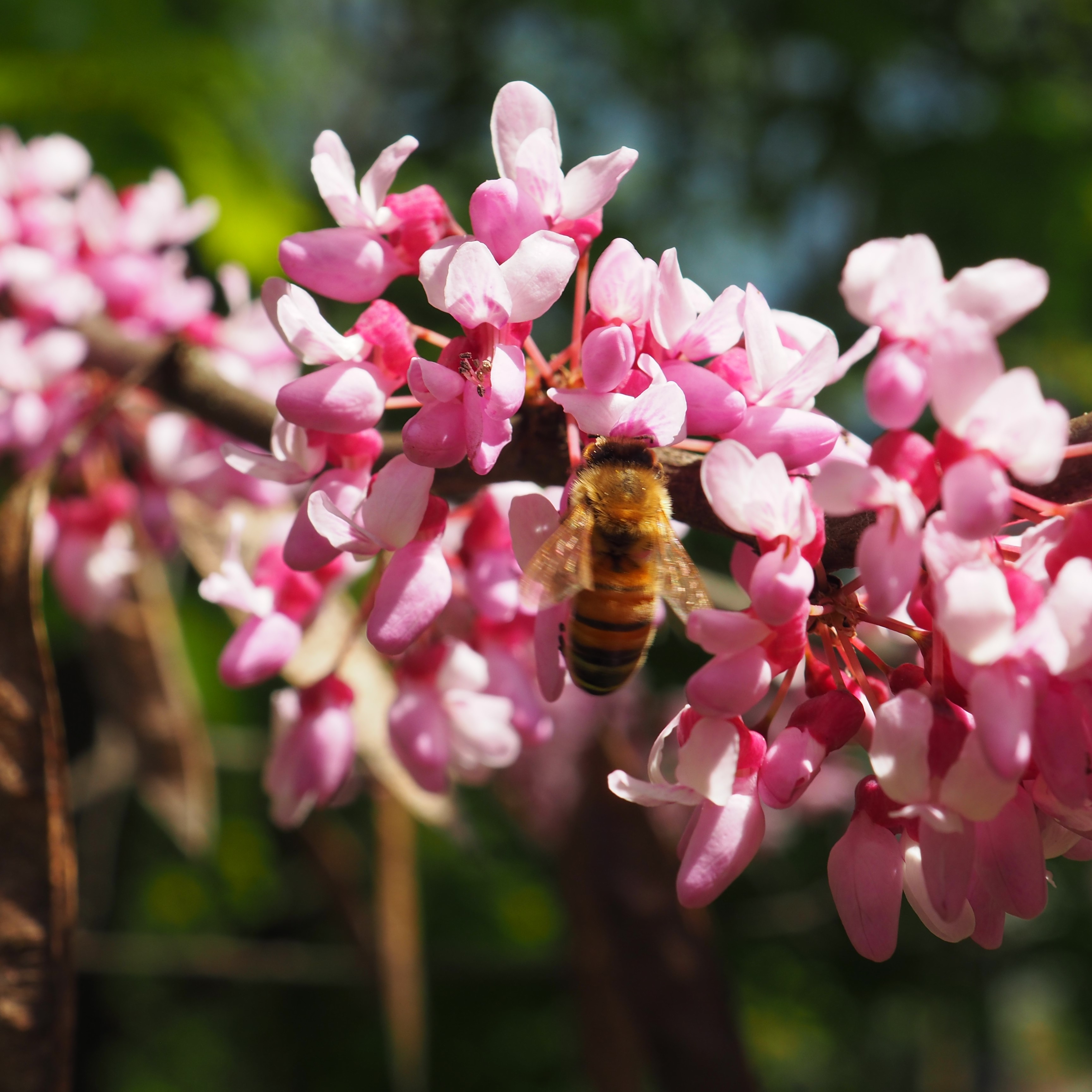
The beetles never cease to amaze. This first is a member of the Fire-colored Beetles. (Though the only fire I see on this particular one is its reddish thorax.) Picture 2 shows it taking off into the air. Oh no! Did I forget this ant (picture 3) and just decide to stick it in with the Beetles? No, don't worry. This is an Antlike Flower Beetle!

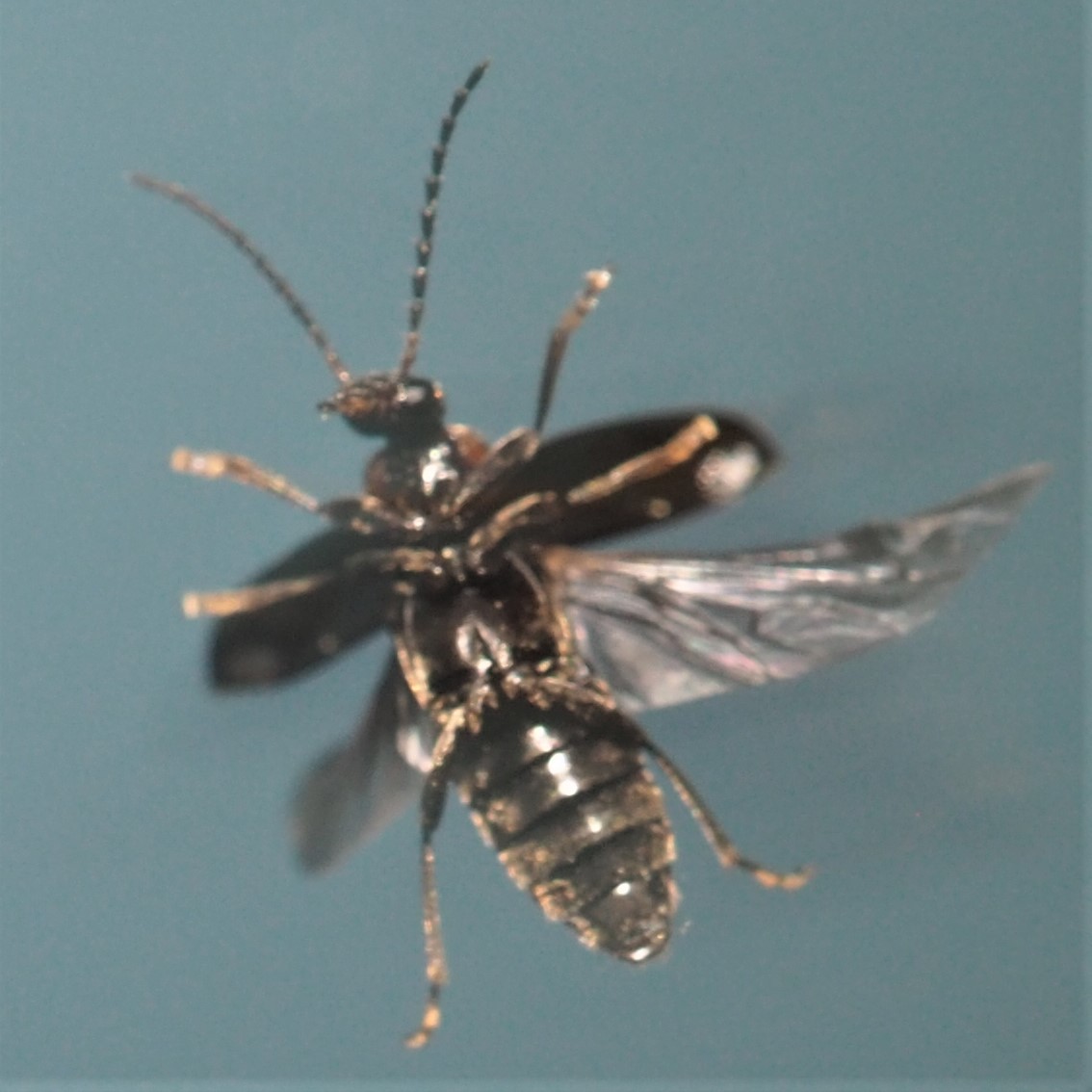
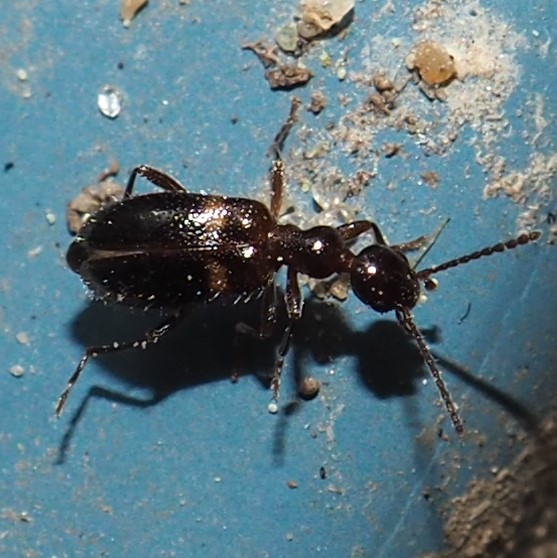
This minuscule beetle is one of the Varied Carpet Beetles. Second is the ever-present Redbud Bruchid. Third is a Brown Rove Beetle scurrying through the grass hoping to shake me. It almost worked. Suddenly it changed into this last picture. It seems to have quickly tucked its big blue wings underneath its other set of wings.
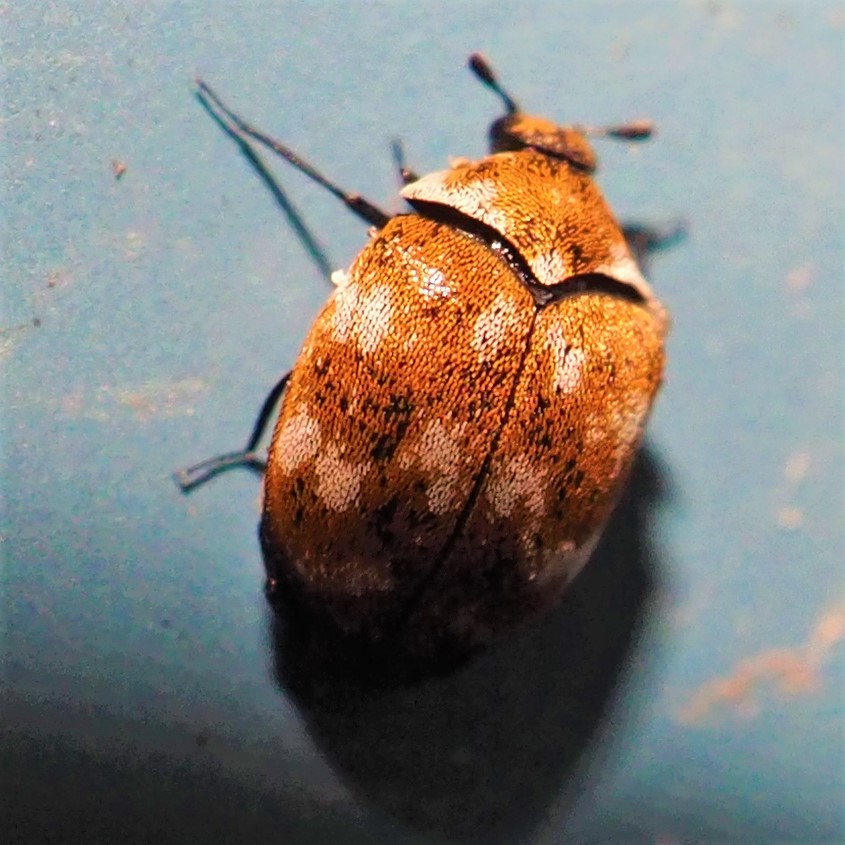
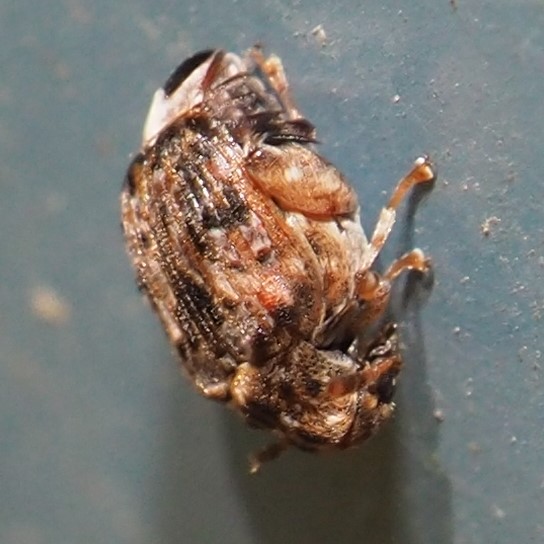
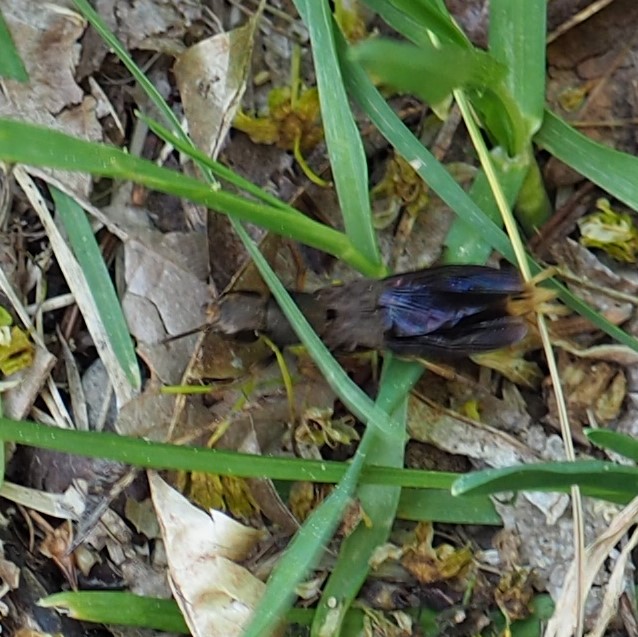
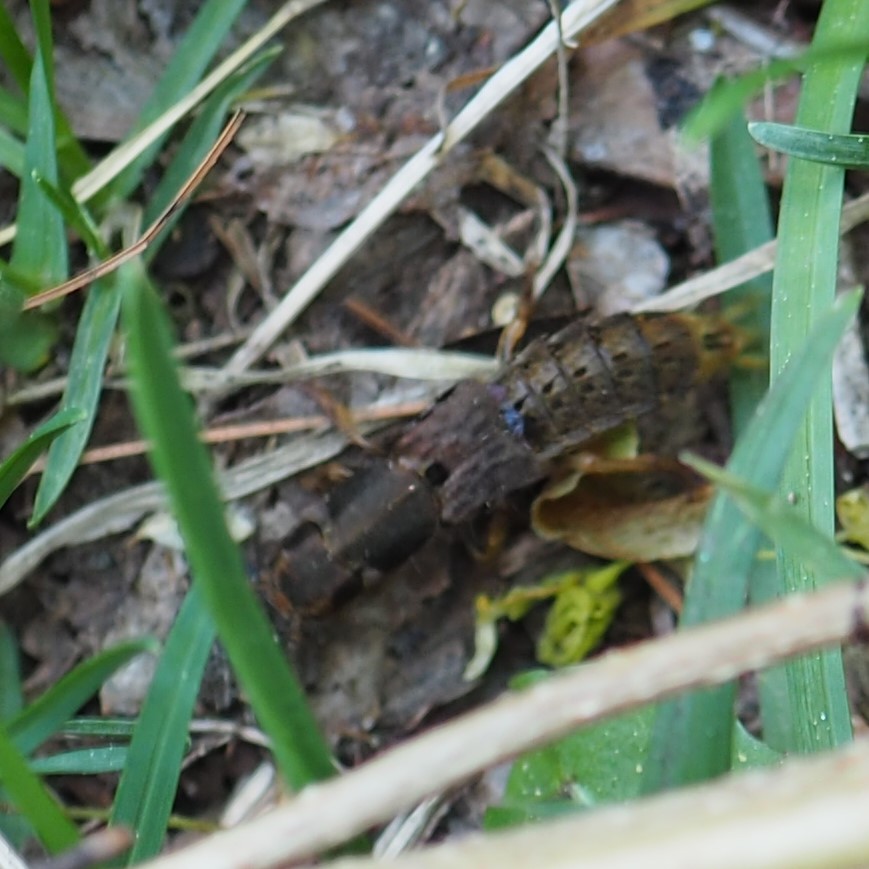
I only saw a few Bugs this week. That reddish leafhopper (Erasmoneur vulnerata) that I was so happy to find is by now so old-hat! I think this other reddish bug is a Plant Bug. I thought at first the third bug was a Leafhopper, then a Planthopper, but Chris Mallory of iNat says it is a Treehopper. I hope I can follow it as it changes from this nymphal form to a more recognizable adult.
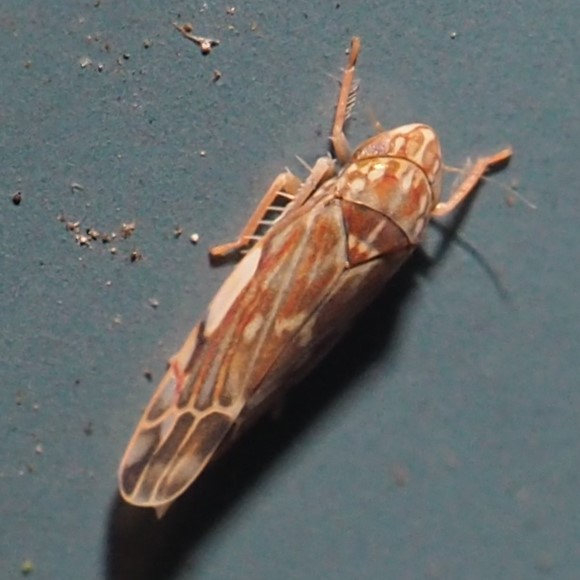
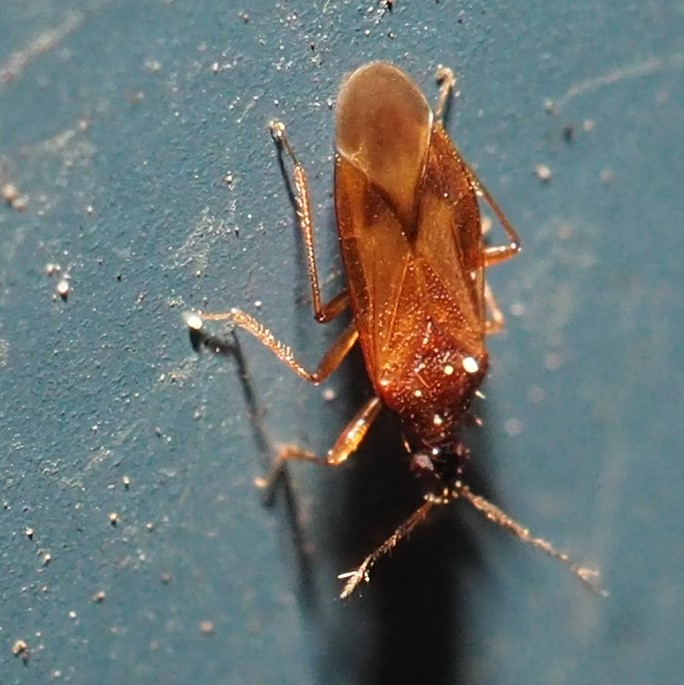
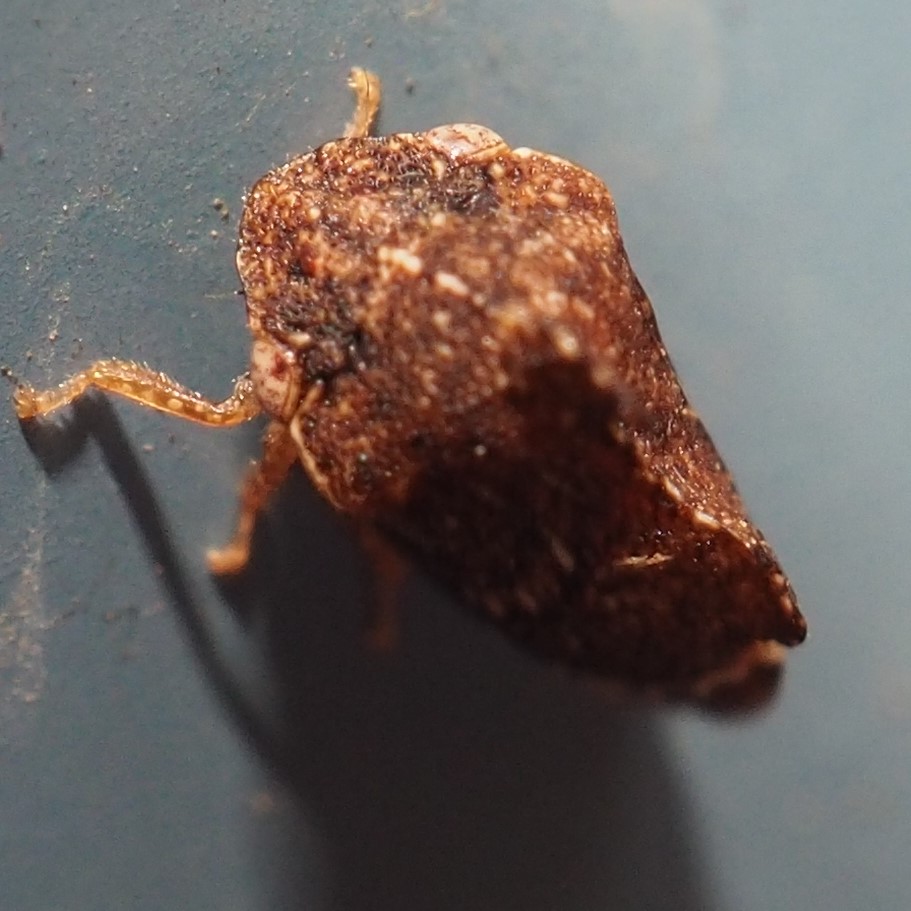
First is a shiny Crane Fly. You may wonder why I almost always introduce the Cranes before any other flies - it's because they come alphabetically first before all the other flies and this week is no different! Some people are fearful around Crane Flies because they look like great big Mosquitoes. Crane Flies don't drink blood! Here are a couple of kinds of Mosquitoes I saw this week. Number 2 shows a mosquito but it won't bite you either - it has no big needle to poke you with, unlike Number 3. Guess what - number 2 is a male. Number 3 is a female, and it turns out she needs blood in order to make baby mosquitoes. Isn't that sweet?
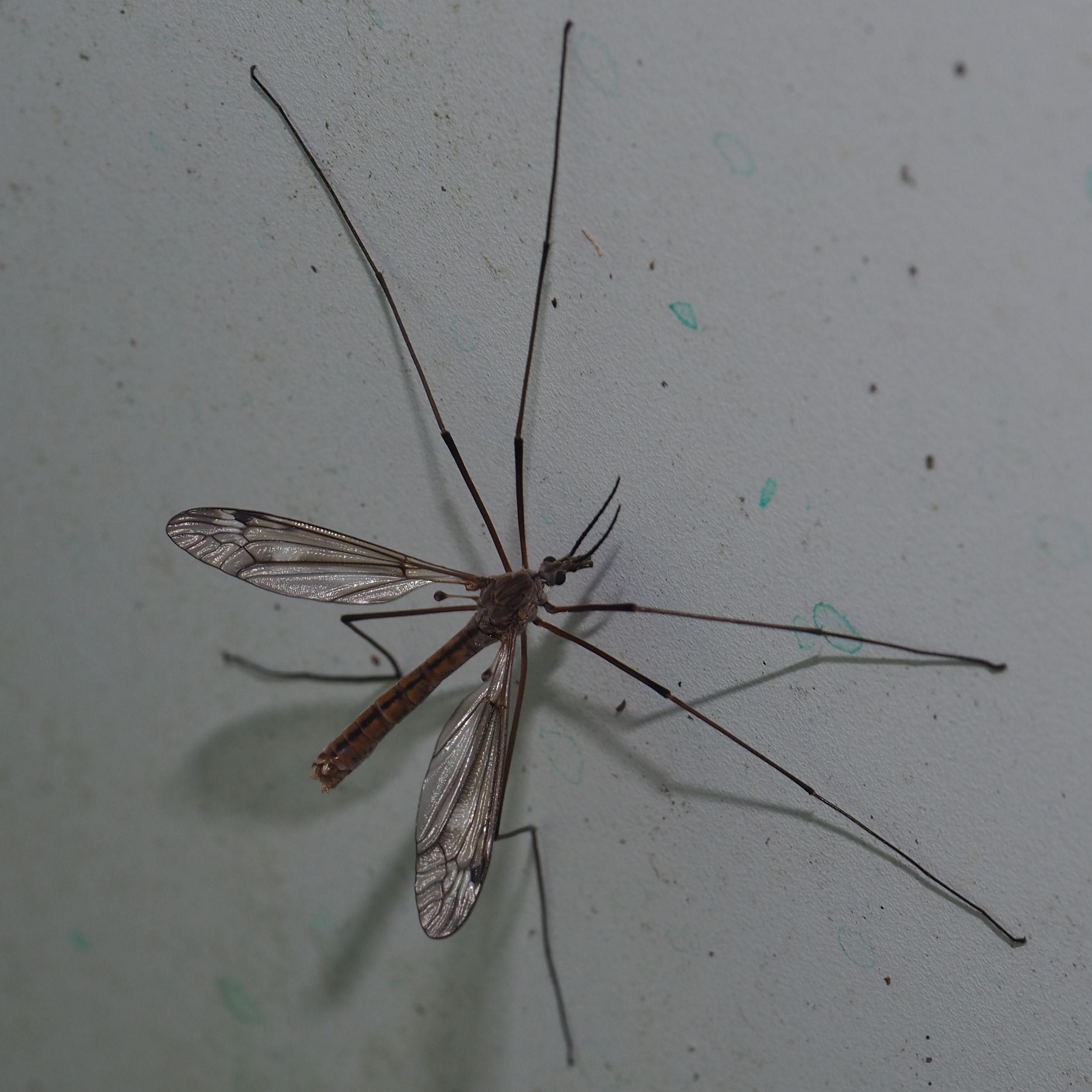
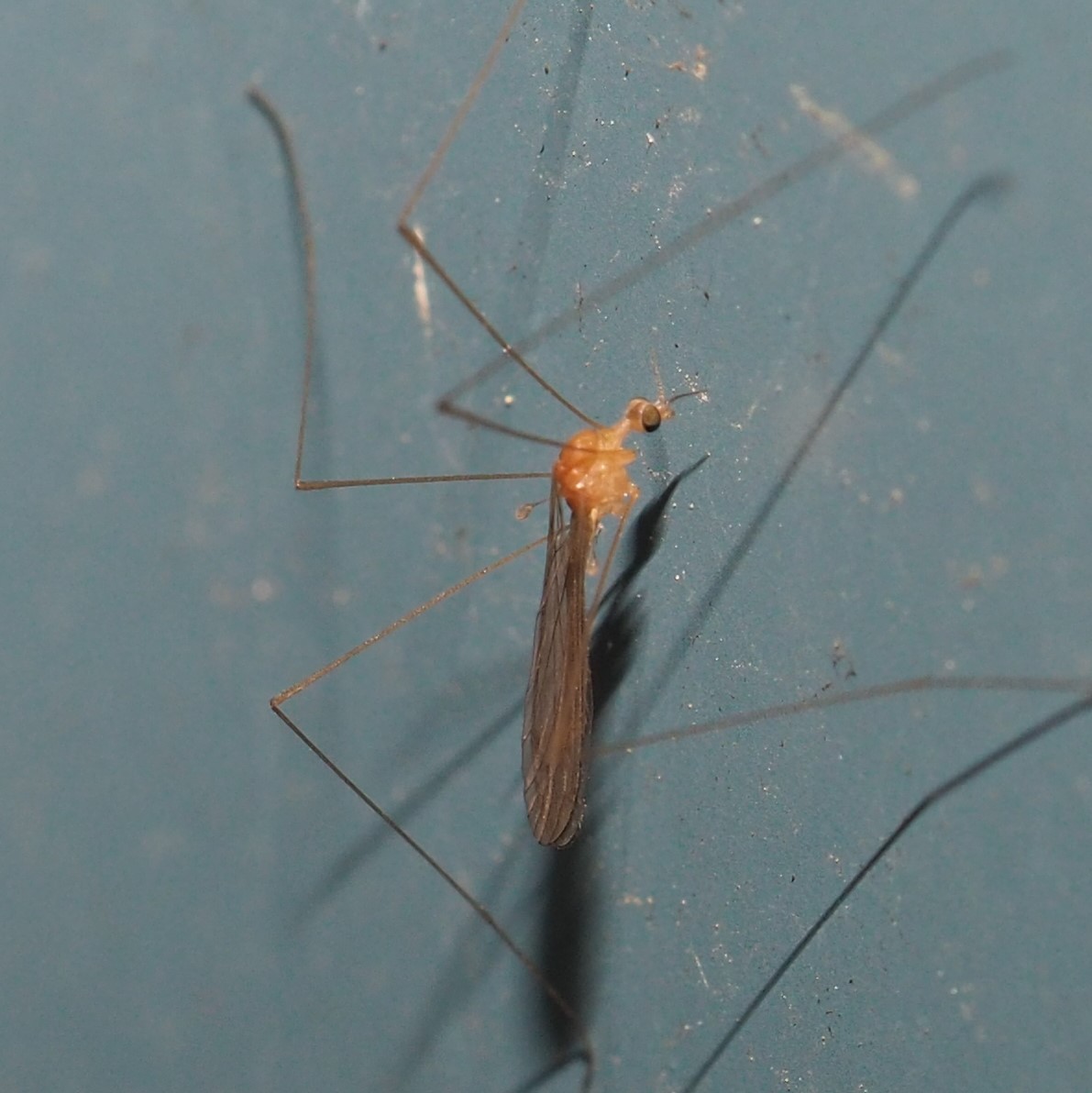
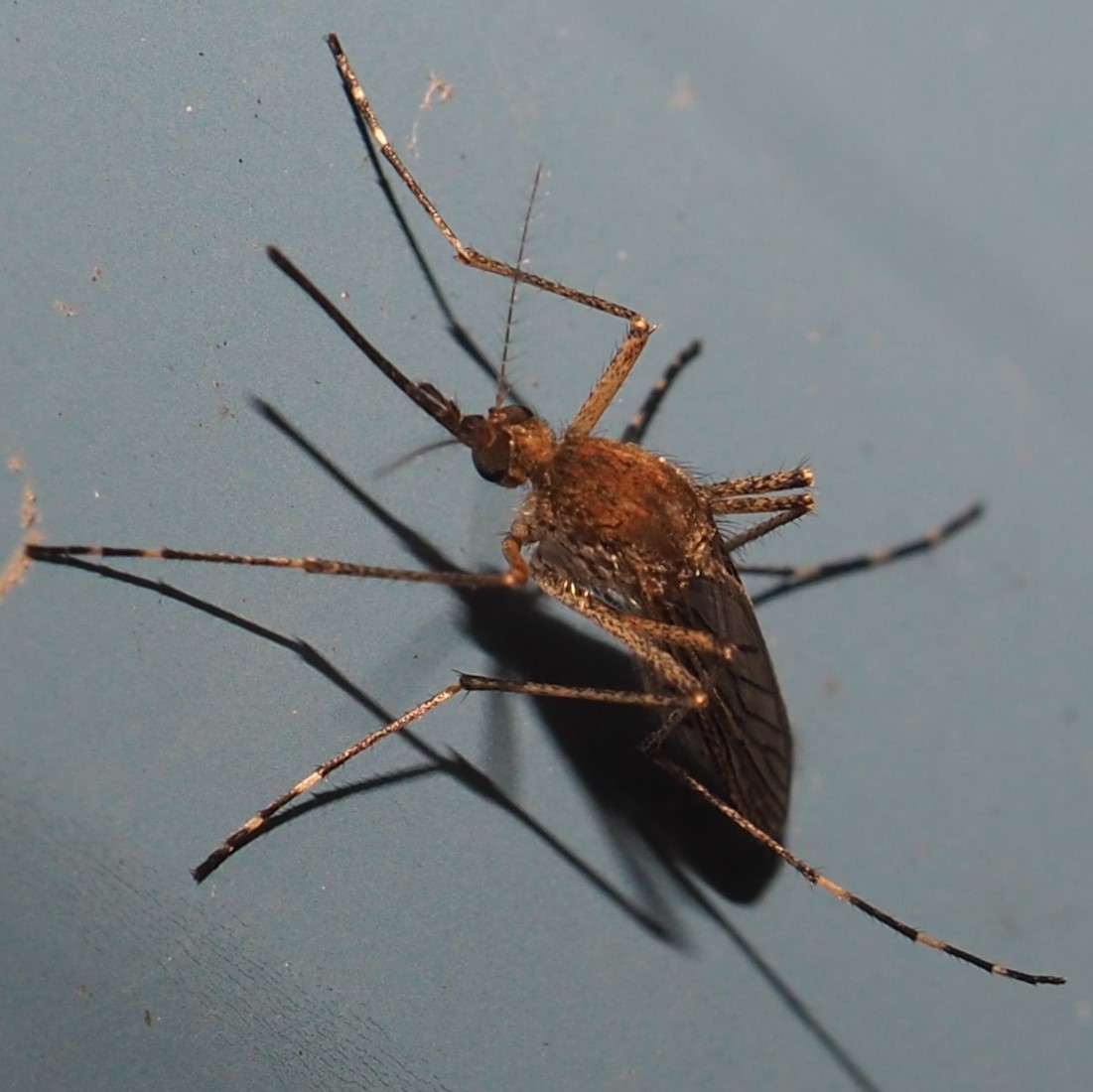
I was going to spare you any Fungus Gnats this week, but then I saw this one which seems to have some kind of tiny white parasites. I believe Number 2 is a Gall Midge - a very interesting fairy-like one. Among often-seen flies, this red-eyed one, which may be what's called a Marsh Fly, is particularly frequently seen.
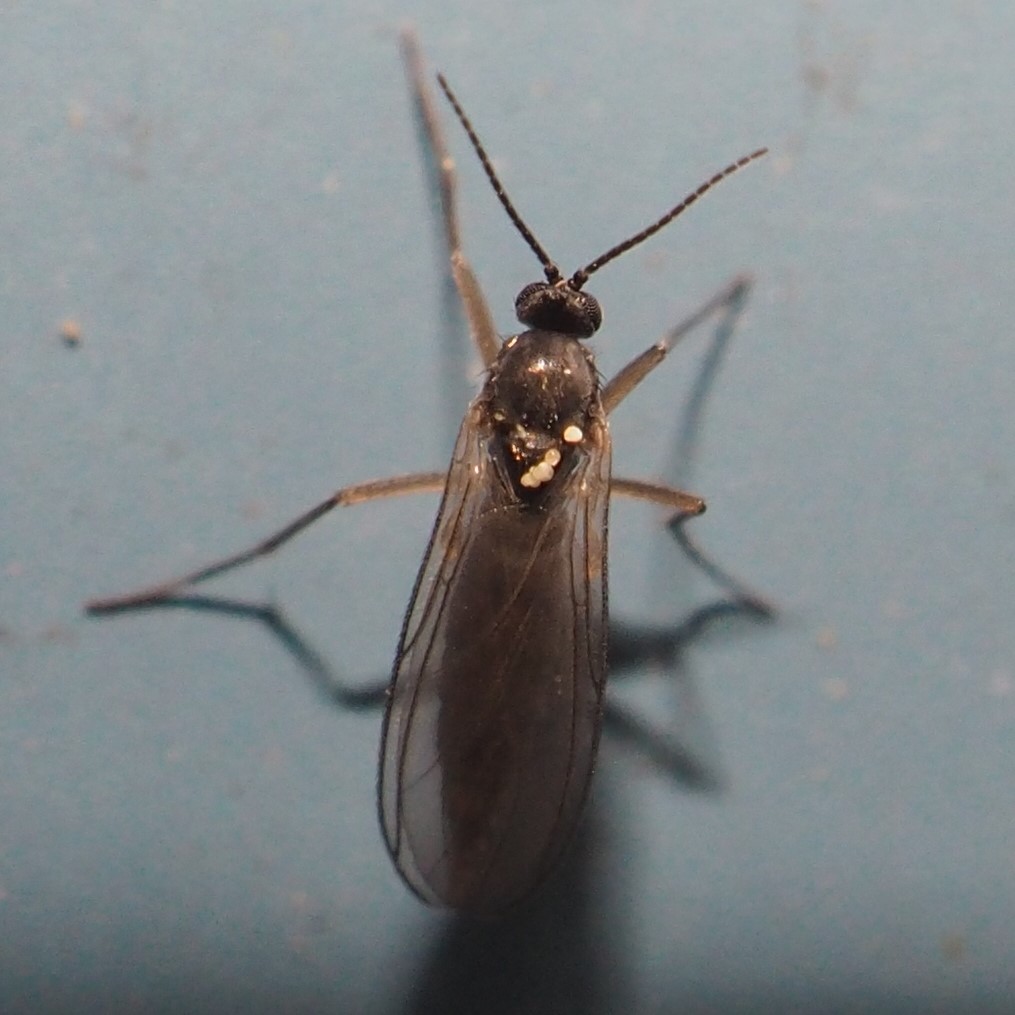
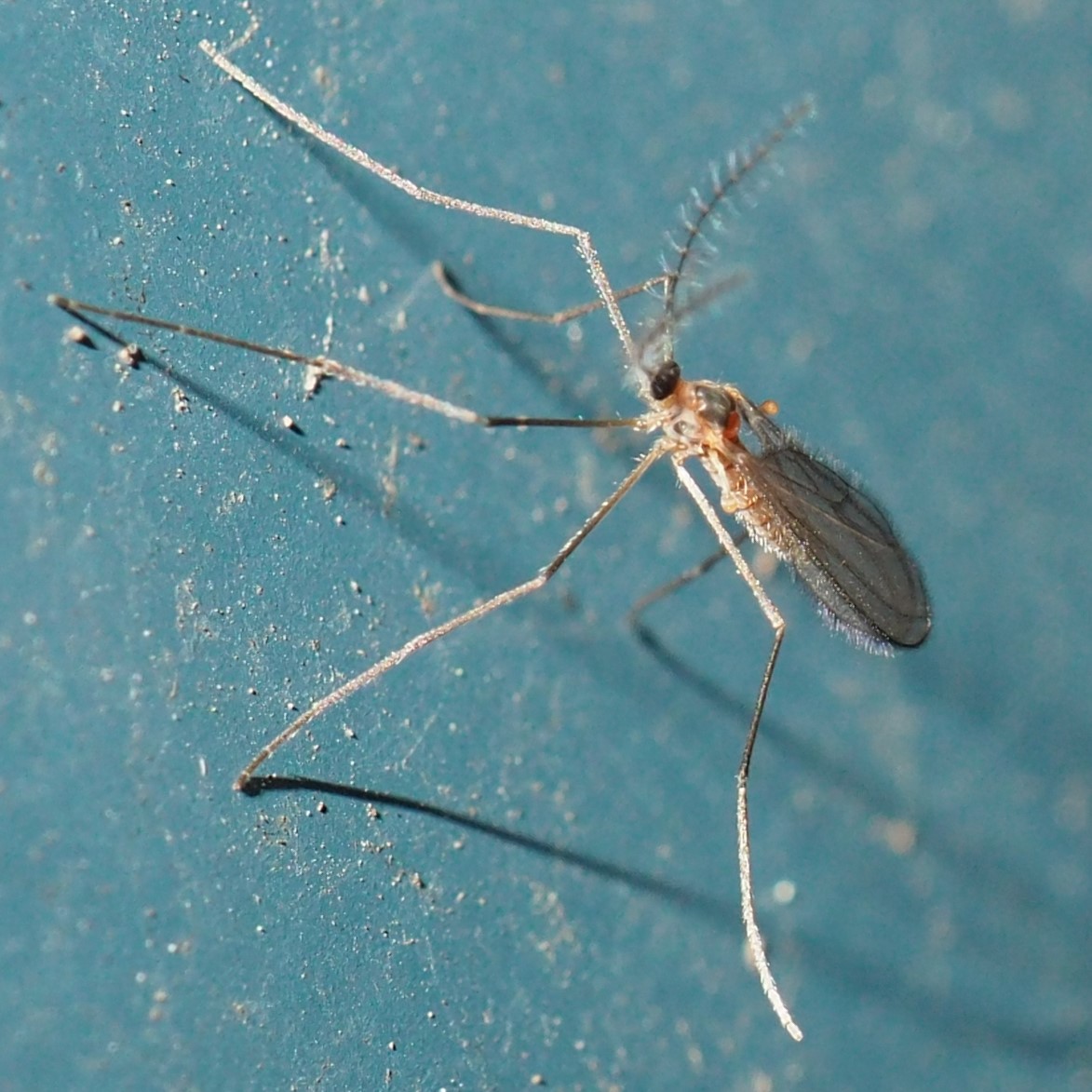
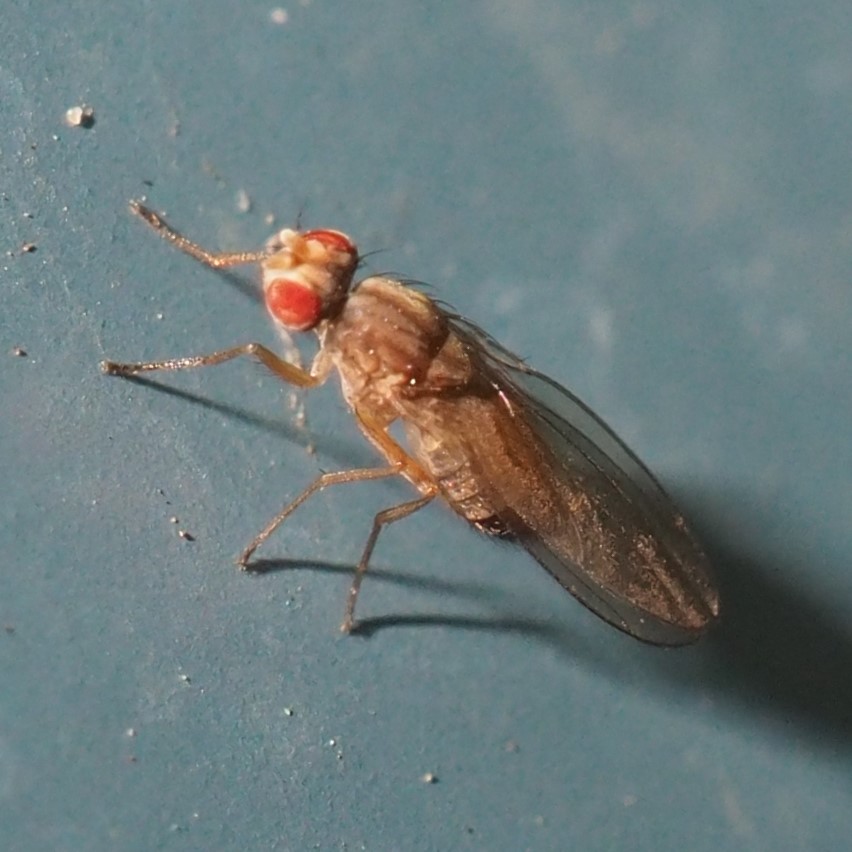
This first little guy looks a bit like one of the hover flies. There are a lot of flies with this body build. Here are some more.
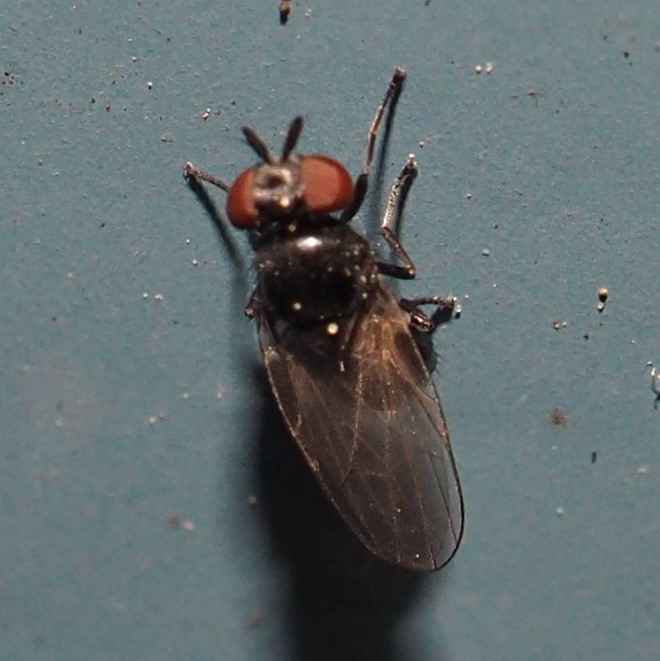
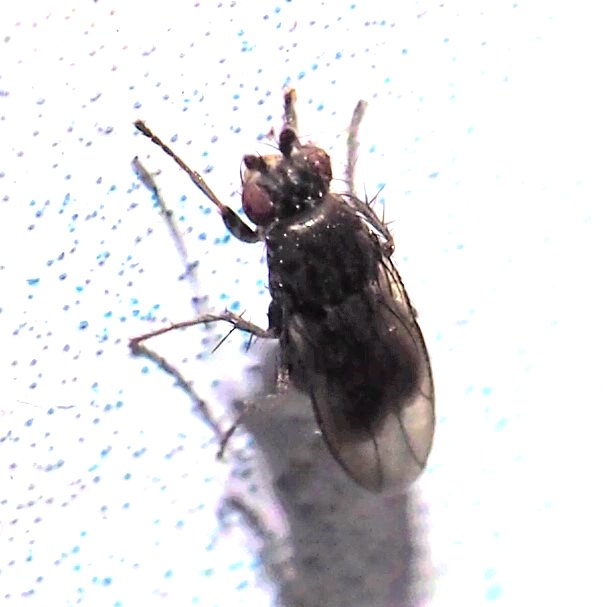
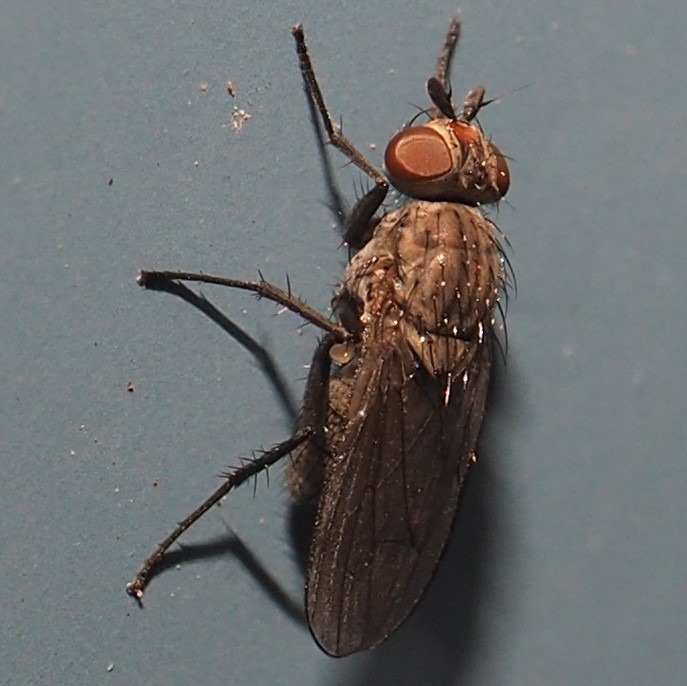
Here is an interesting fly. Look at its head, which to me resembles a mushroom cap. And here is another of those little flies with spotted wings. Third is another mystery, one of those things that would be called (if they were birds) LBJ's. (Little Brown Jobs)
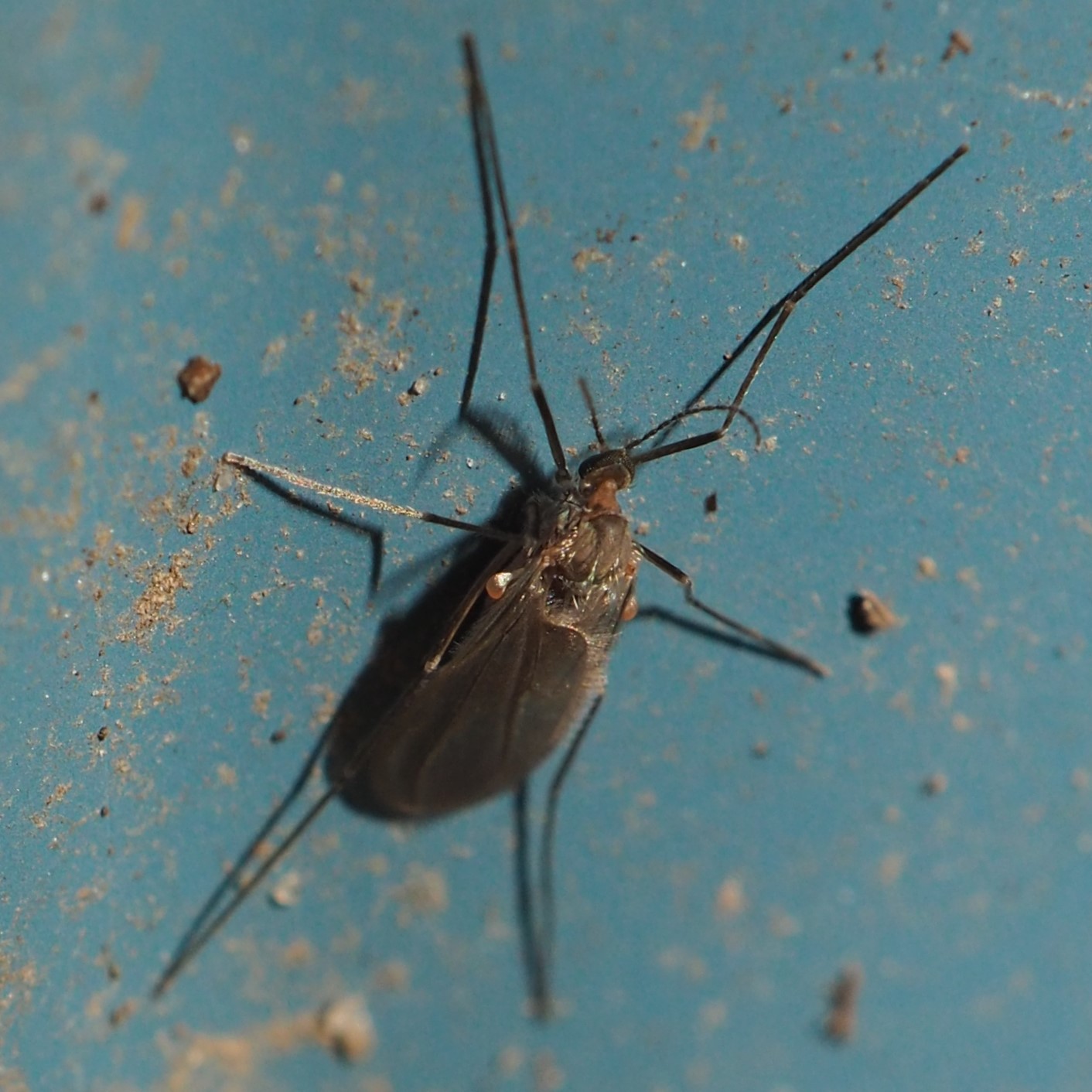
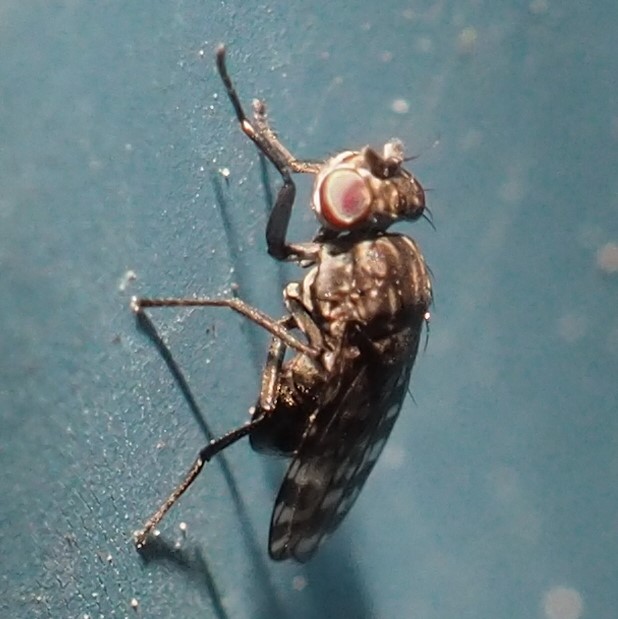
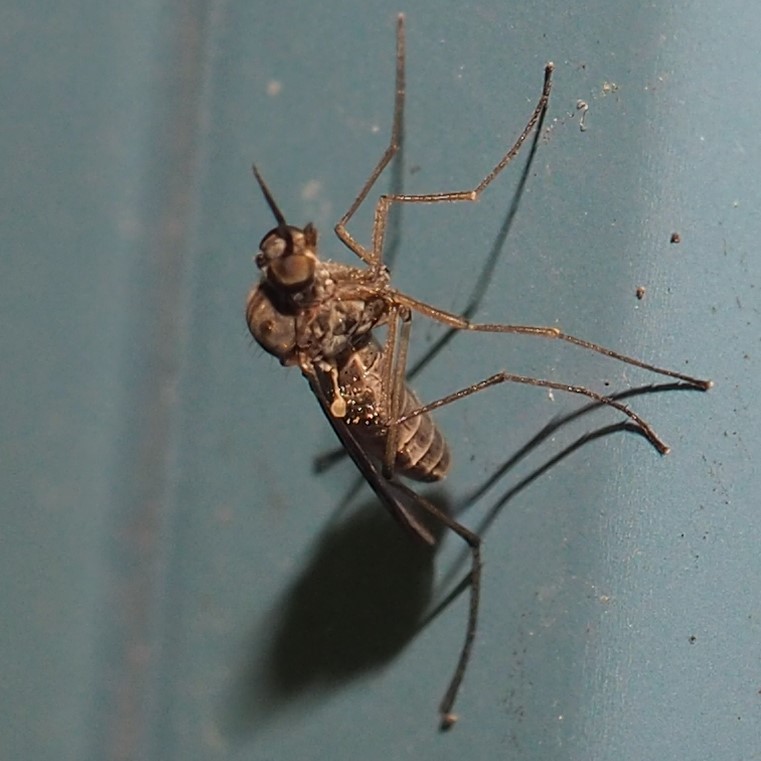
The fishes are thriving. This week for the first time I gave them a bit of fish food. That's the whitish spots you see on top of the water. At first, they ran when they saw me and heard me yelling "Here, fishy, fishy, fishy". But after a very short time, it was clear that they associated that song with getting fed. In the middle picture, look how many of the fishes are reddish-brown. These are the original fish colors. Those colorful fish are the result of a lot of breeding. Well, here in an unmanipulated environment, eventually the baby fish are likely to be born with their original genetic patterns. The fancy tails are still present in many of the brown fishes but I suppose after a few more years they may disappear from some more of the population. I do plan to go to the pet store and pick out a fat healthy calico (multicolored) or shubunkin (multicolored but with LOTS of that beautiful blue color) or comet (red and white) to provide some "new blood". Also remember that the pond seemed to be down to only one female at a time. For many years Fanny (a lovely fantail calico) inserted some bright colors and fancier tails into the population. But Fanny died last year and so we need to supply one or two healthy female fishes. Here is a fanciful look at what the fishes would look like if an imaginative pond manager were able to color the fish a bit. Now THAT's genetics!
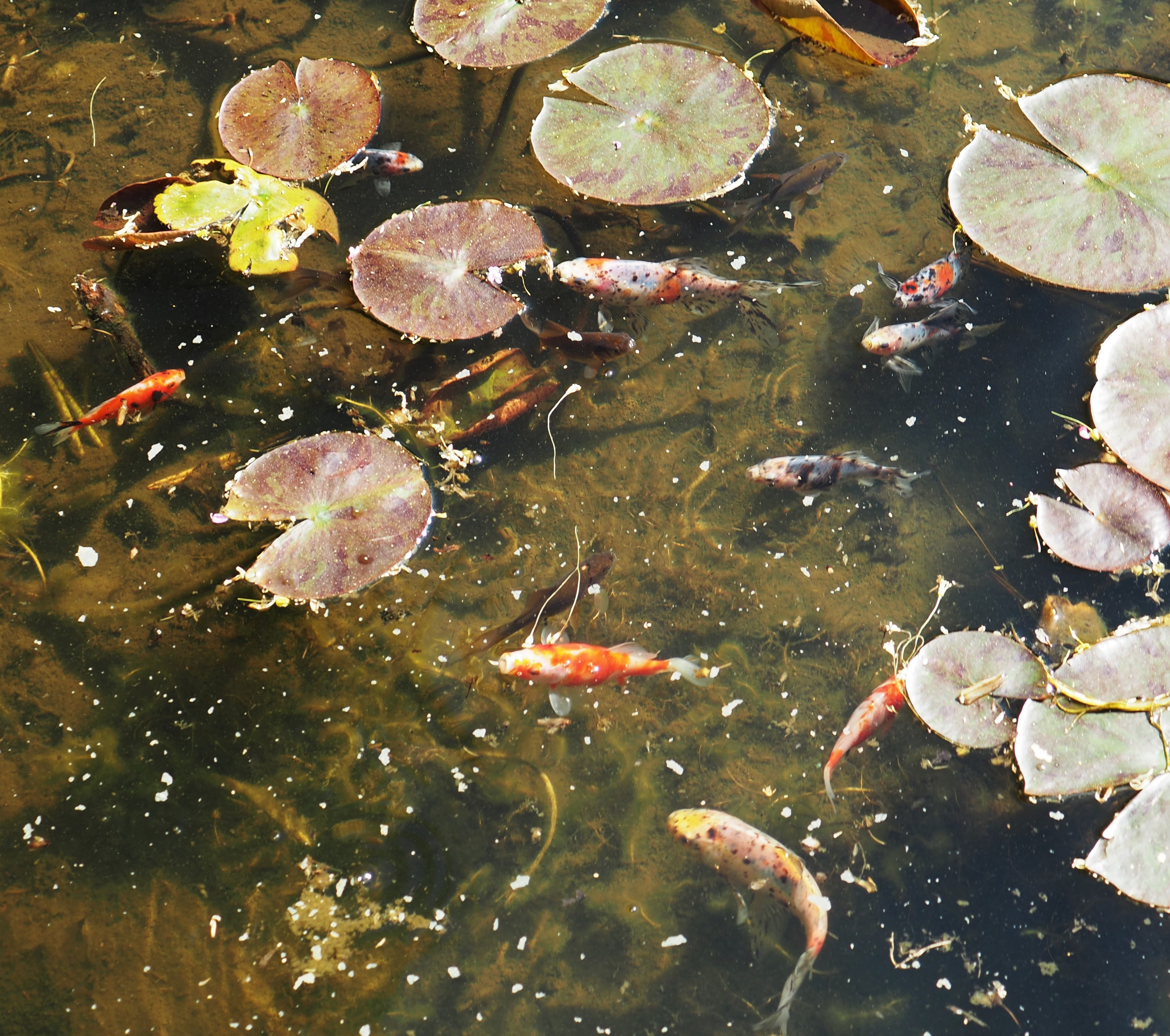
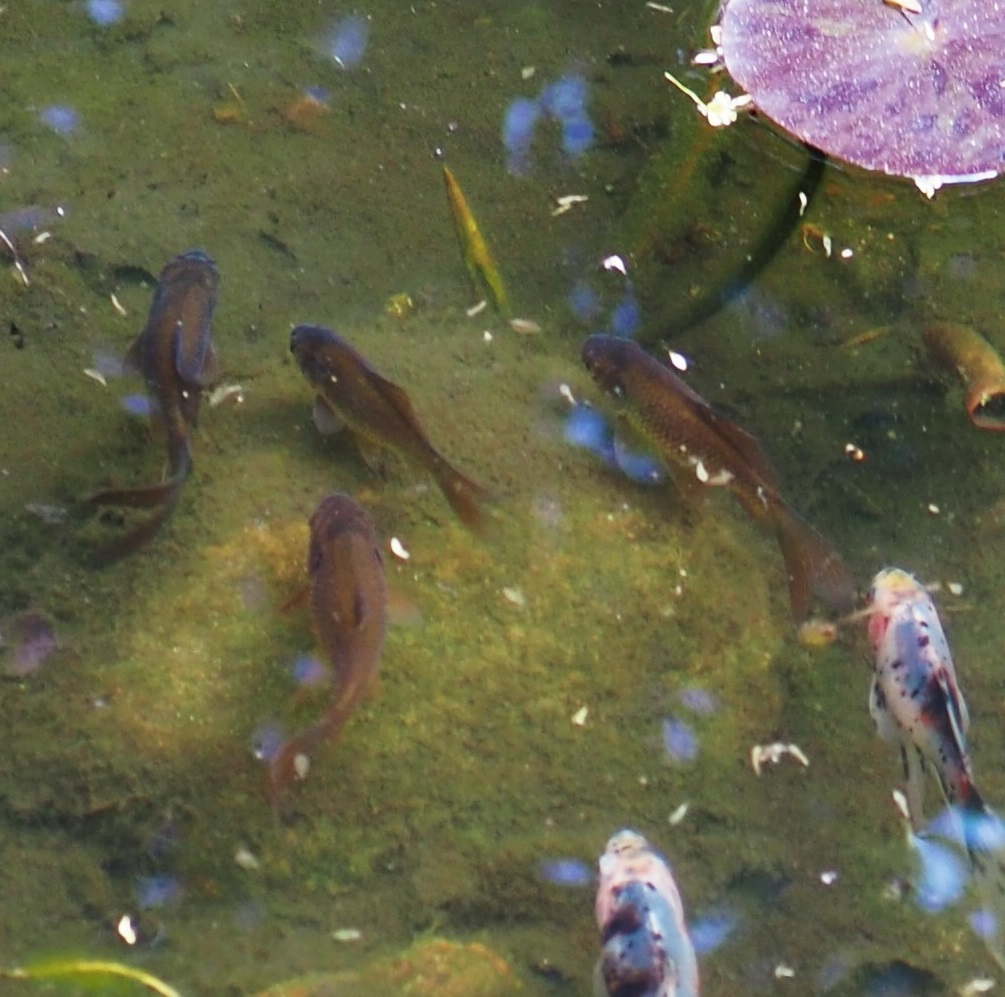
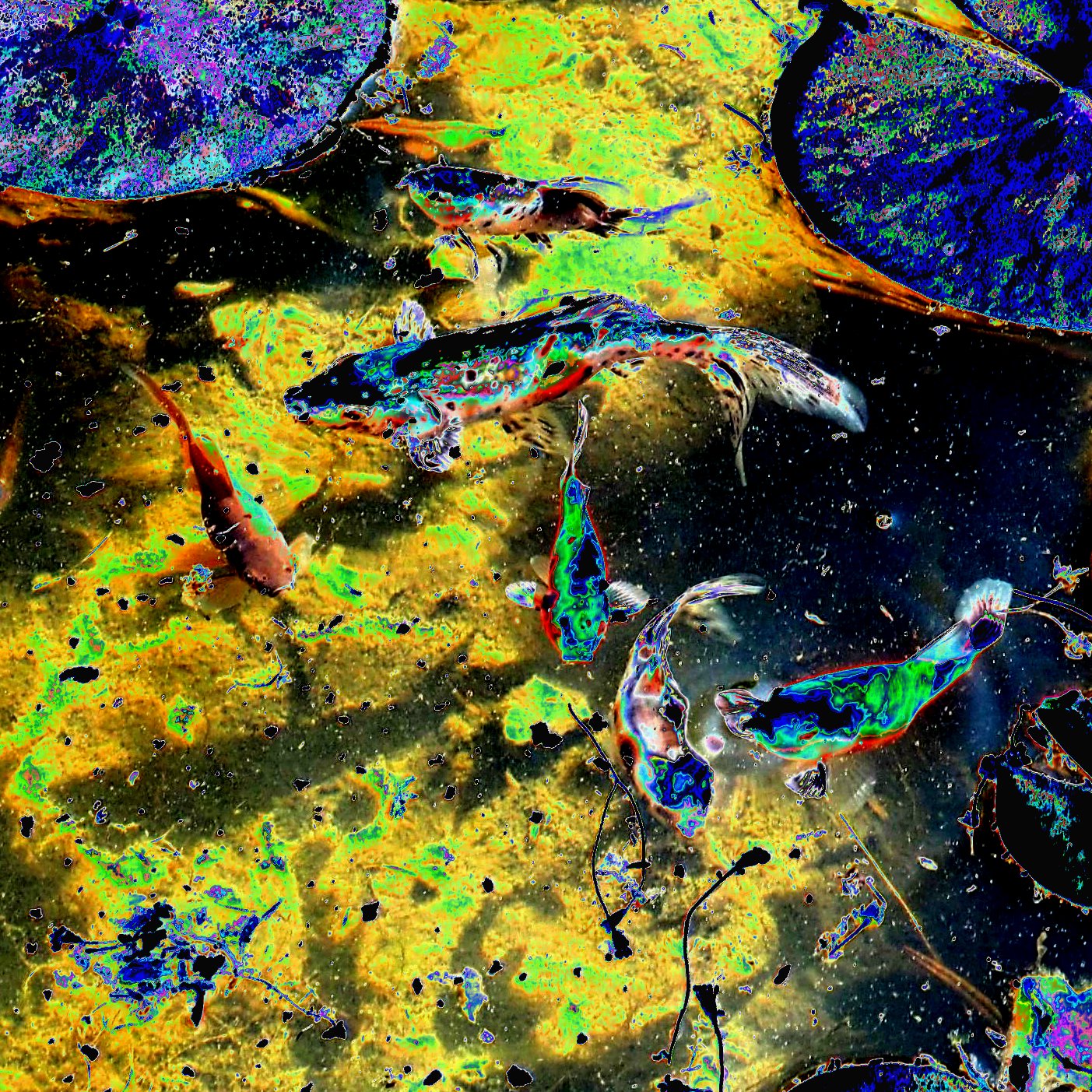
Froggy is in the midst of a storm of toads right now. I won't show you all the pictures right now but just want you to know the raccoons held off till now. It's 8 am on Sunday. I do need to keep an eye open to make sure the raccoons don't come around while I'm upstairs typing up this blog. Anyway, yesterday about 4 pm the trilling started. One lone toad sang and sang and began to be answered. Picture 1 shows Froggy assuming the getaway position. He is not at all happy by this scene. Picture 2 shows a male trying to mate with another male. The latter kicks off the former and emits a loud clucking sound to set the former straight. By (Picture 3) evening there was a pair in mating (amplexus) position on the side of the pond and not in the water as is more likely. The huge pinkish-yellowish female is mostly hidden under the larger-than-usual male. In case you don't know this, mating among frogs and toads is quite different than among many other organisms. The (usually smaller) male grasps the female with his thumbs, and this pressure eventually causes her to release eggs in two strands. Each strand is constructed of "egg"-"gel"-"egg"-"gel"- etc and I believe the "gel" forms nutrients somewhat like the yolk in a bird's egg. Anyway, as the eggs are emitted by the female, the male releases his sperm to each egg as it passes underneath him. Gradually the first day the strand becomes a curly fluffy rope that dissolves in about a week at which time about a thousand tiny tadpoles are released. They live on algae in the pond water for a while. There's your basic lesson in Frog/Toad reproduction. To be continued next week.
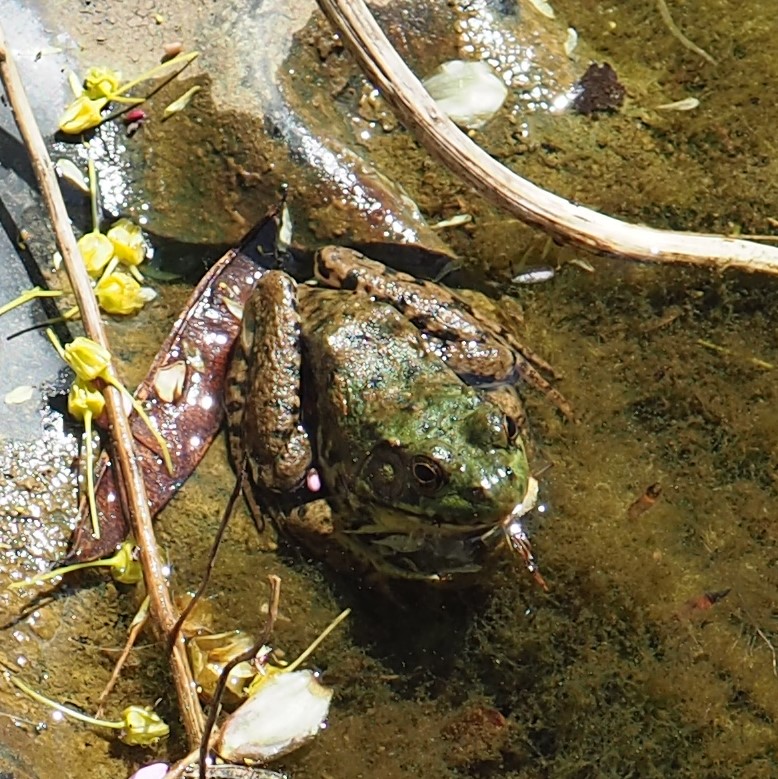
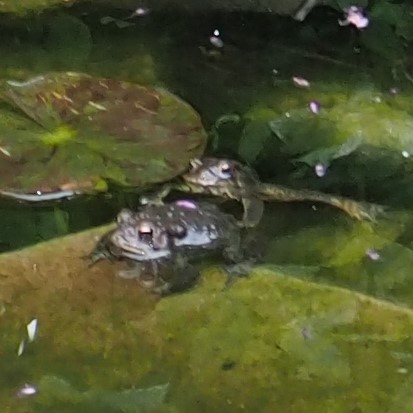
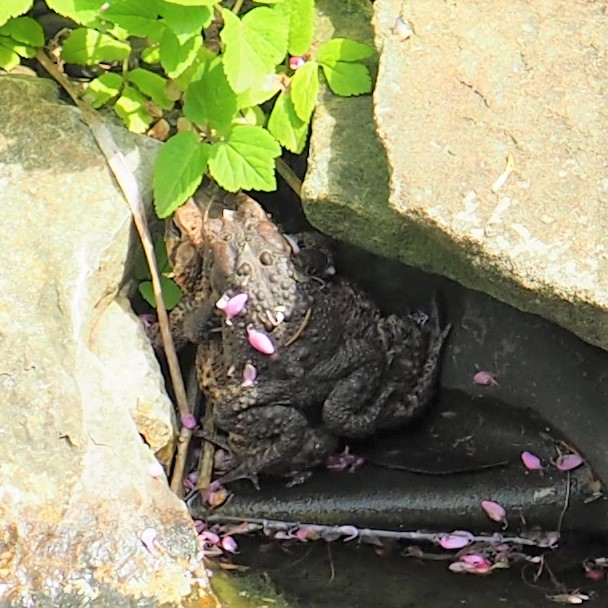
Let's see how the flowers are coming along. The peony is by now in too much shade to do much but here it is with its one flower bud. Here are the primroses this year growing along the sidewalk. And here is one of the white ones - how lovely they are in the green surrounding them.

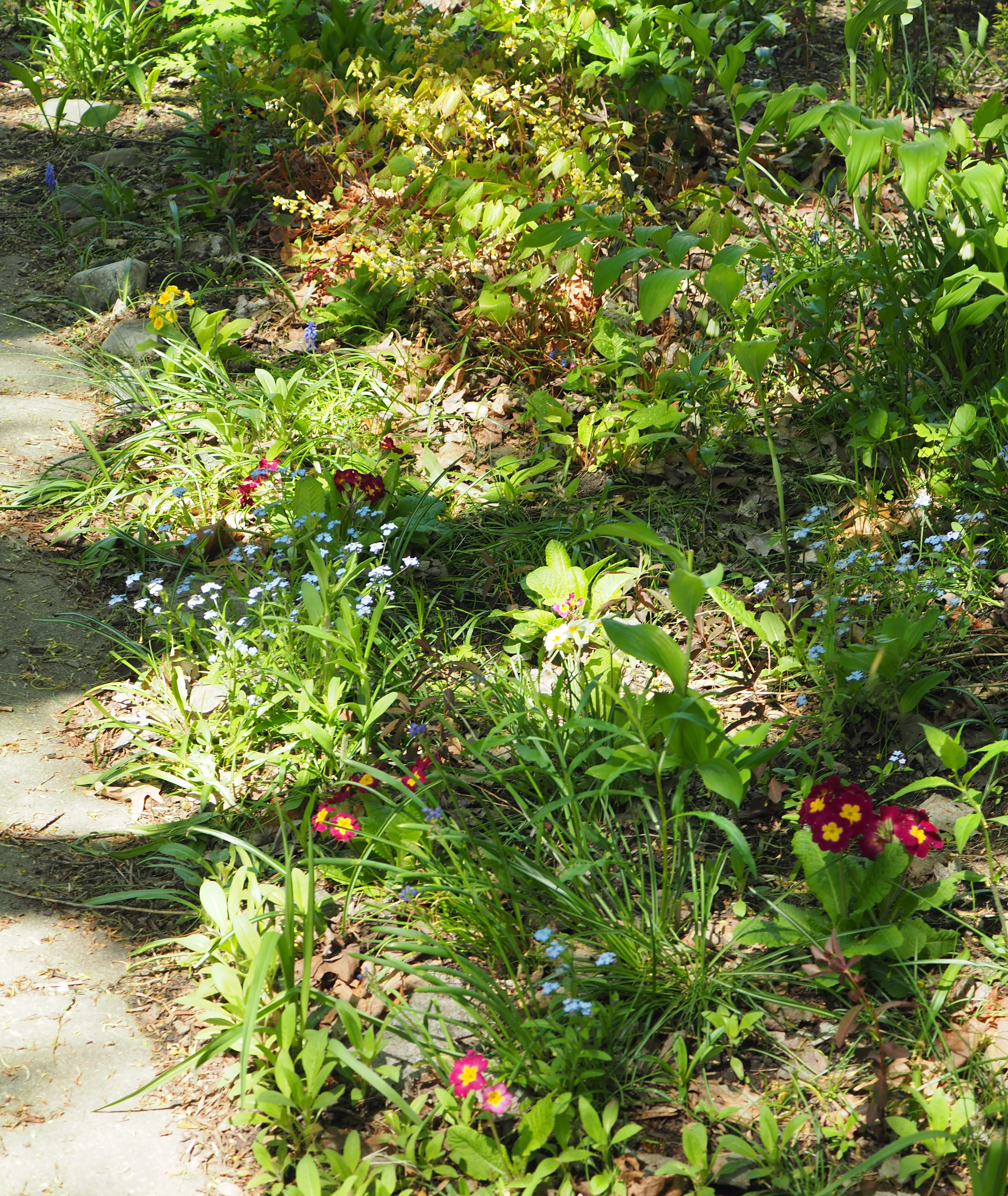
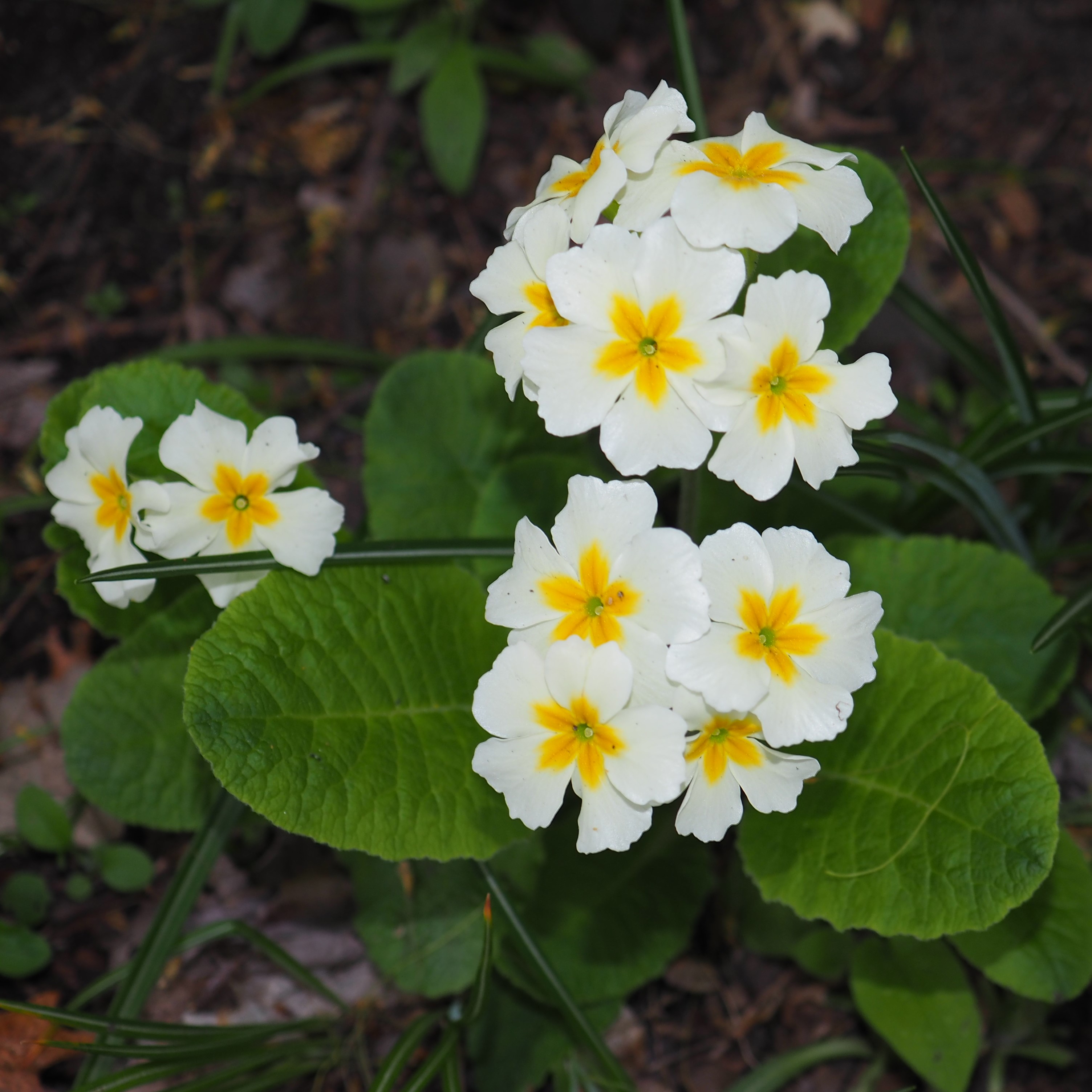
Dame's Rocket, as you might know, looks somewhat like the usual Fall Phlox in habit and flowers. Here it is budding up. Next is a Jack-in-the-Pulpit - supposedly Jack is the minister (a sturdy white pole) with a heavy curved canopy over his head. Every once in a while a lone White Morel comes up - I always leave it alone hoping it will spread its spores and replicate. It never does.

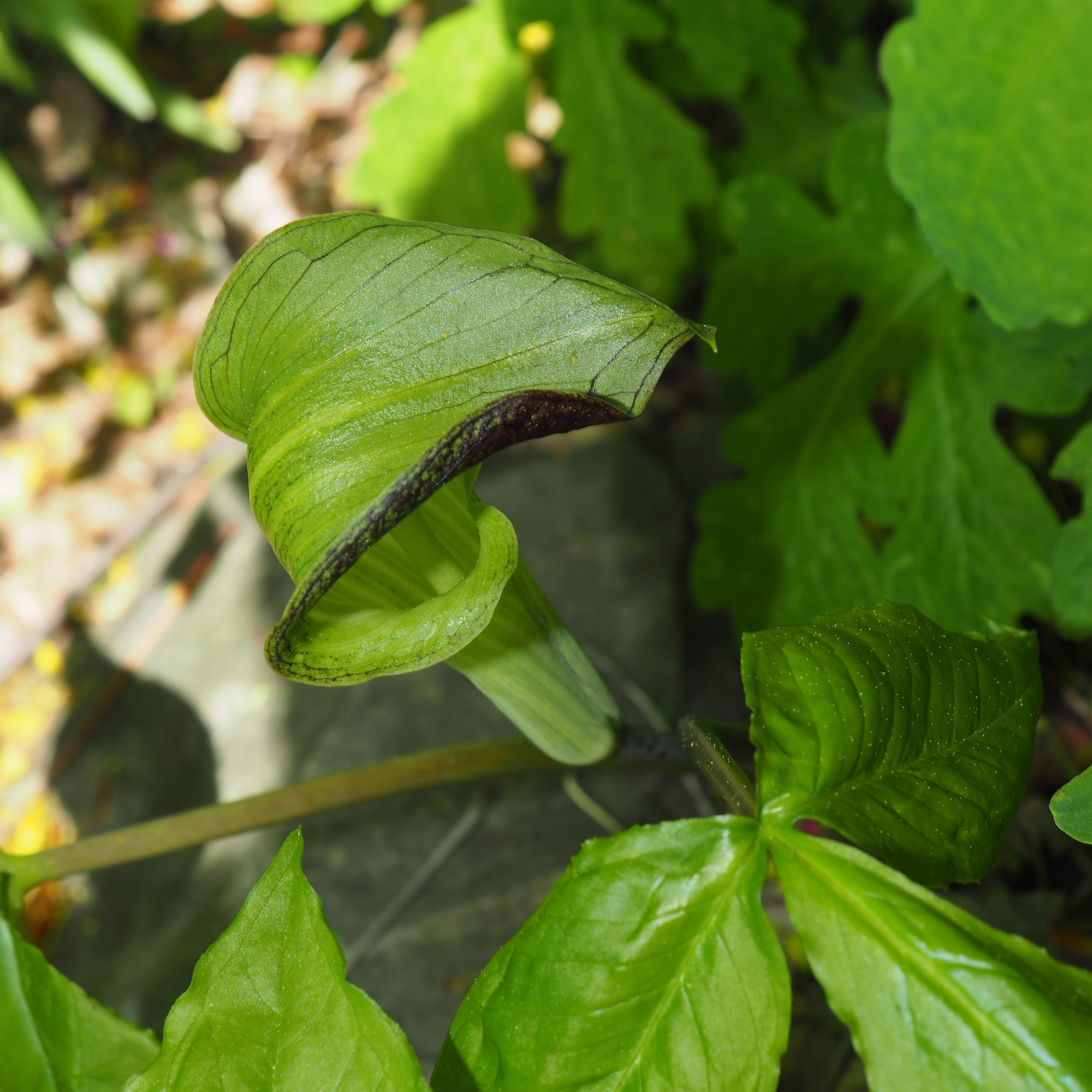
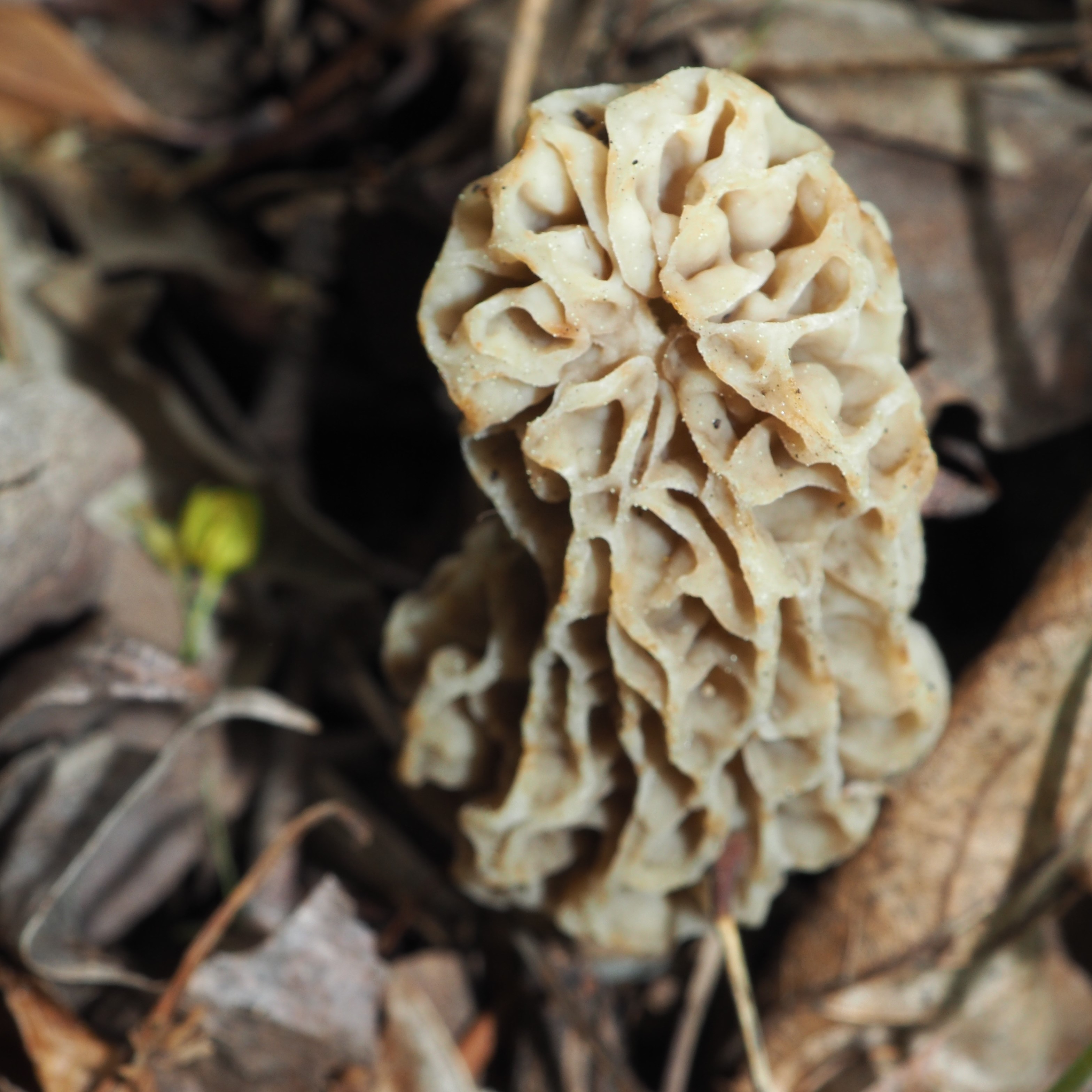
Let's do Spiders. We can now see the Common House Spiders maturing from a baby form to the stage that looks as if it is developing a human face on its abdomen. In Picture 2, I see a male face with a furled brown and a big moustache. They tend to take on two major color combos - brown on white and black and white. Picture 3 shows the former.
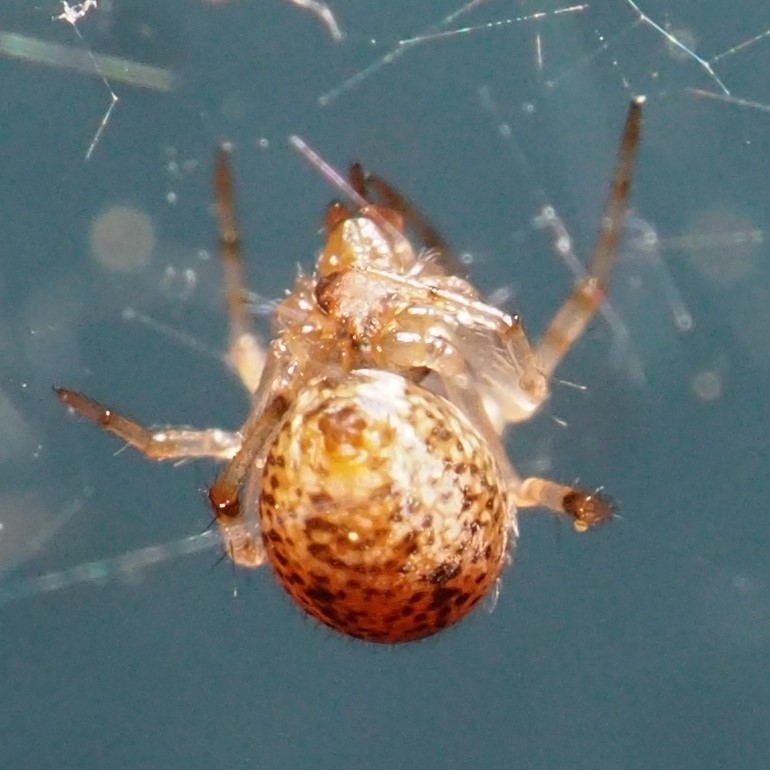
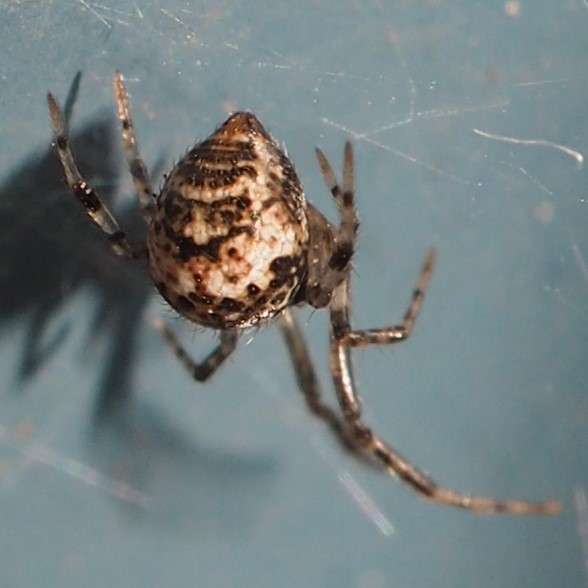
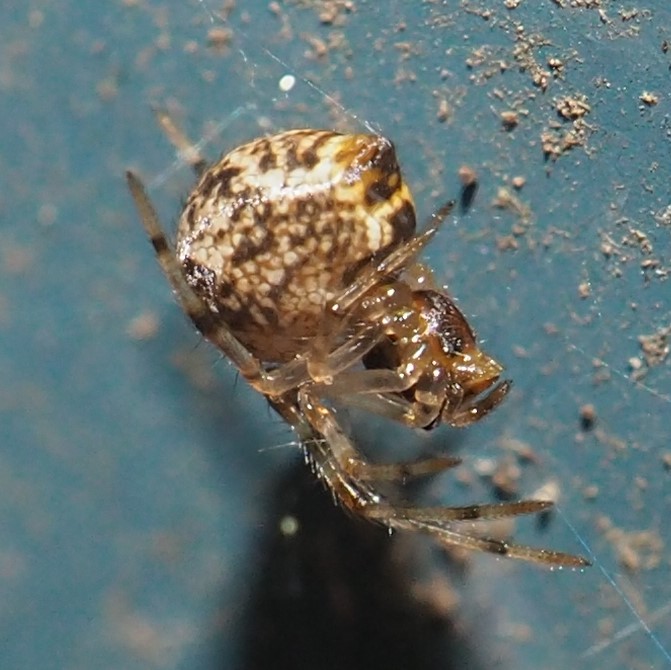
This week we saw two young Orbweavers. One is Leucauge venusta, the Orchard Orbweaver, which we've been following for some weeks now. This week we saw the first traces of green in its legs. Another Orbweaver that we haven't seen in a few weeks is the Tuft-legged Orbweaver, Mangora placida. Pictures 2 and 3 show this spider, which I actually found on an orb-shaped web!
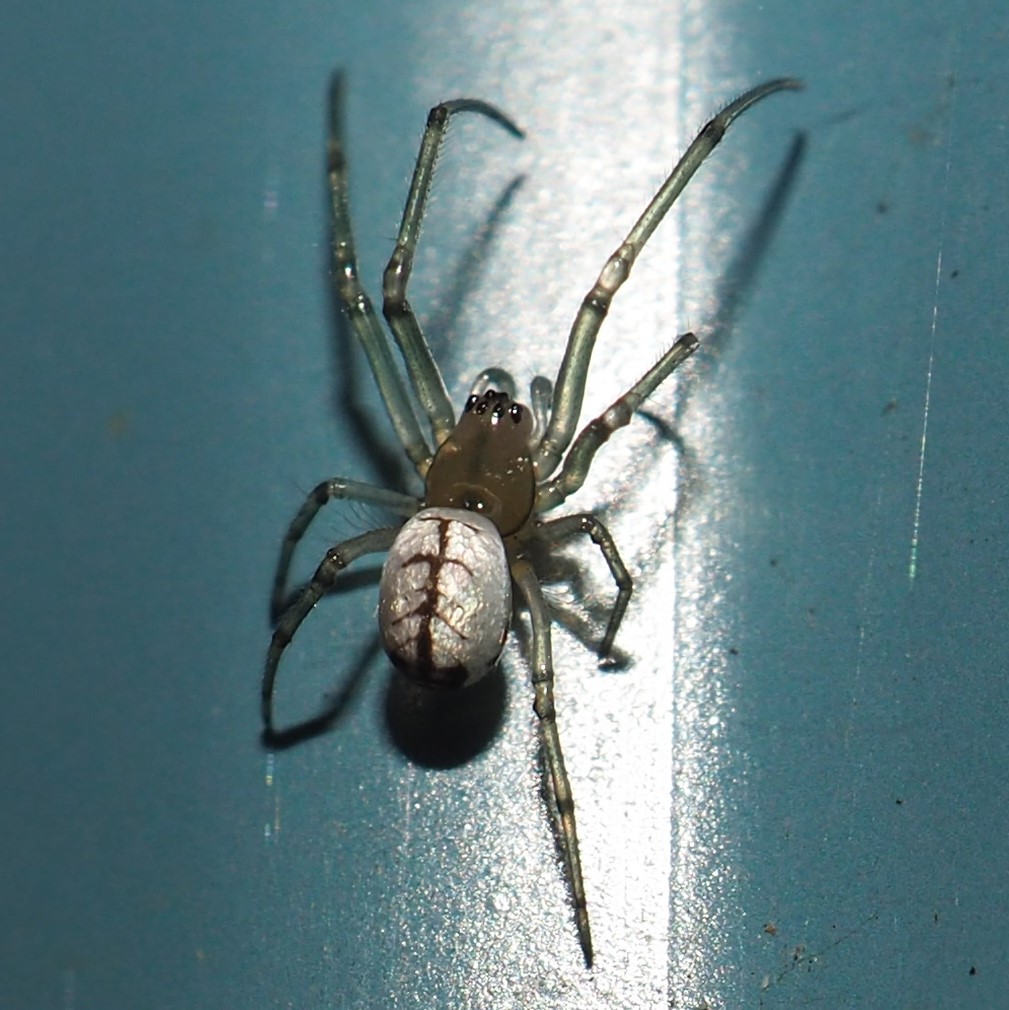
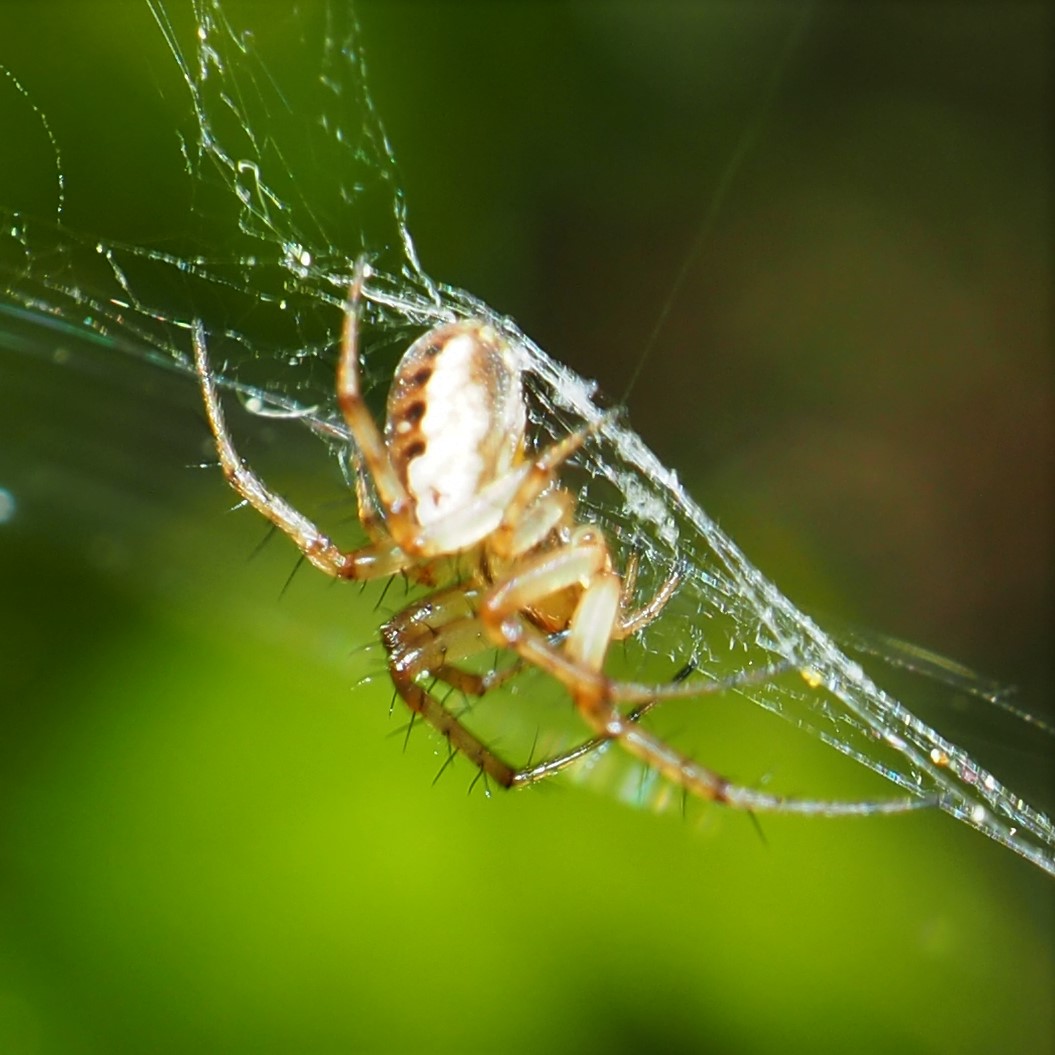
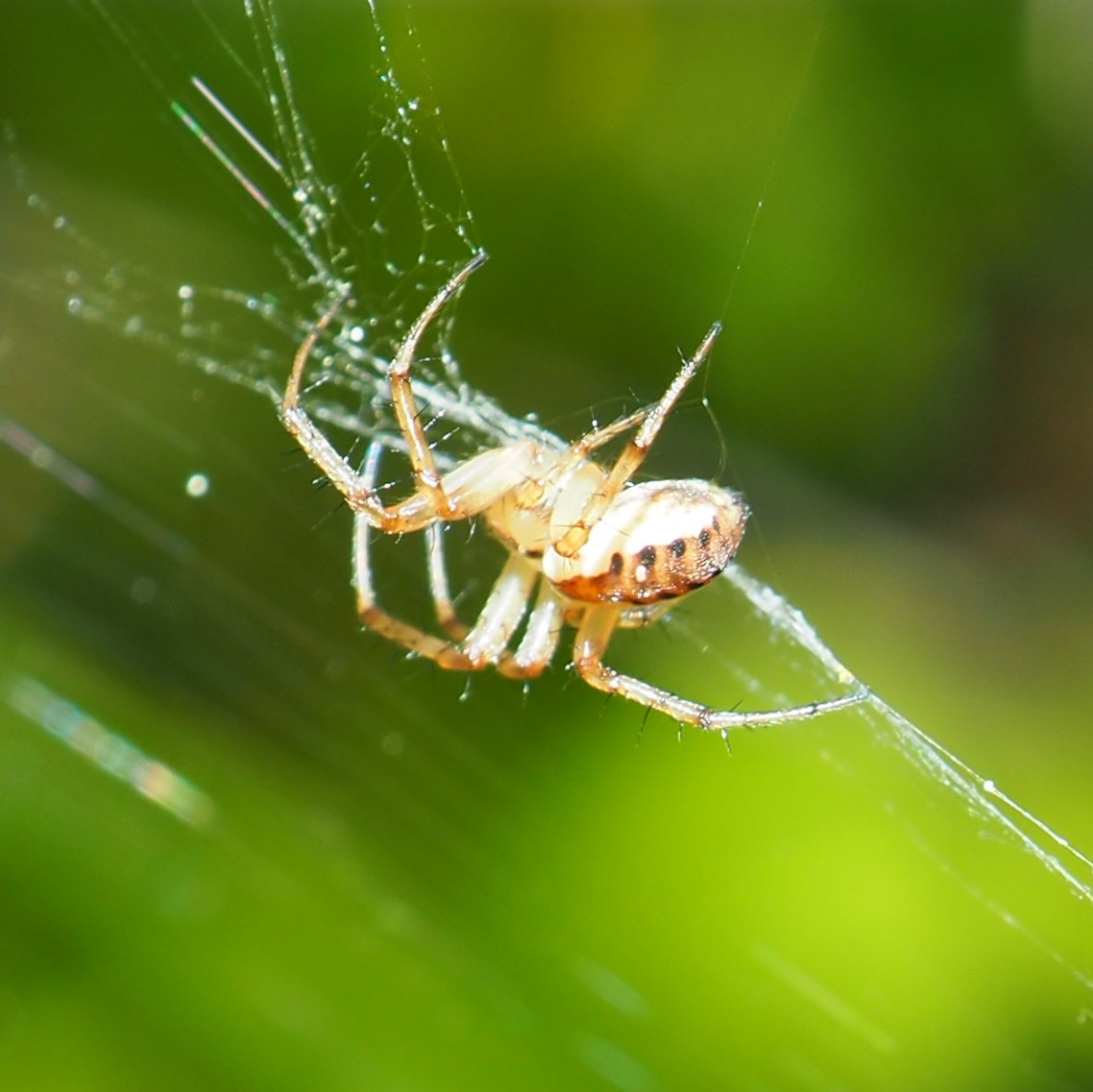
My personal favorite Jumping Spider, Naphryx pulex, has been on the wall for a few days now. Then you could easily spot it. But a smaller version is out there now. I don't know if it is a new generation member or not. The first image is of the larger version. Second is the headlights view with those gorgeous baby-doll eyes! Third is one of the tiny ones that barely shows up in MY old eyes.
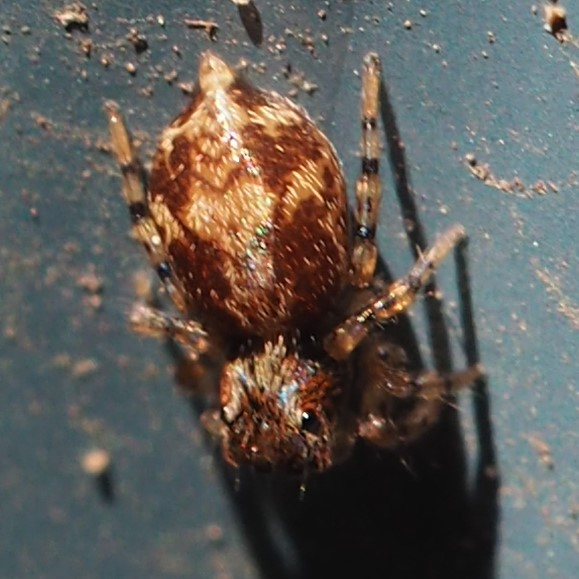
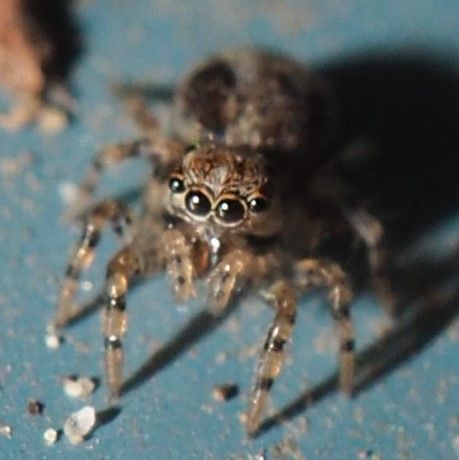
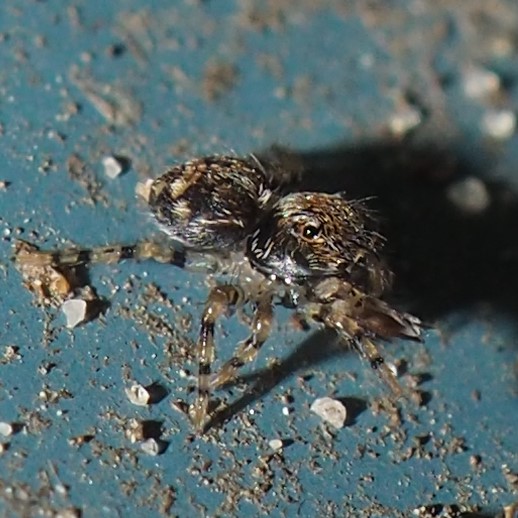
Last week a spider fell through the radar (how does that work?). To me it looked like a spider that had been gutted by some other creature. But this week, seeing this Spider seem to fold out reminded me of a spider I'd seen in 2015. It turns out to be the Horned Parasitic Cobweaver, Neospintharus trigonum. It can appear all folded up into a triangular form, and then open out to show its legs separately. A chat with Rebecca Ray (@tigerbb) explained why the "Parasitic". Apparently it approaches the web of another spider and quietly picks off the little bits that the host spider would never miss. Apparently there is some reason to believe that this behavior may actually be beneficial for the host spider!
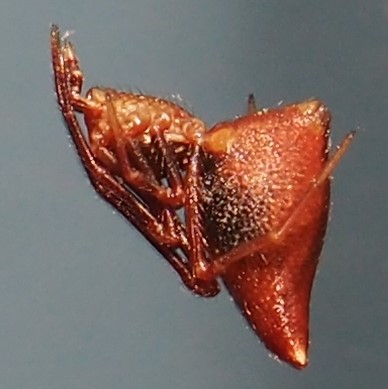

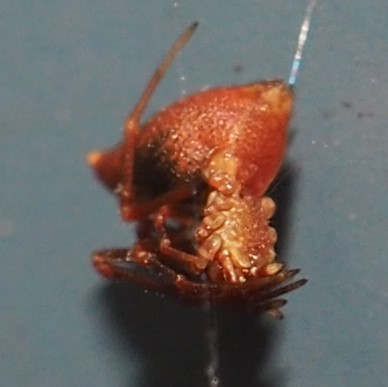
The other big surprise this week was the reappearance of the Pirate Spider, genus Mimetus. I believe that the big white "grin" on the abdomen puts it into the species M. puritanus. It has been such a long time since I saw one of these! In the second picture, the Pirate seems to have a smaller spider in tow as prey. At first I thought it might be mating but this bigger spider is a male and a female would have been larger than it. So it is more likely to be having the smaller spider for supper.
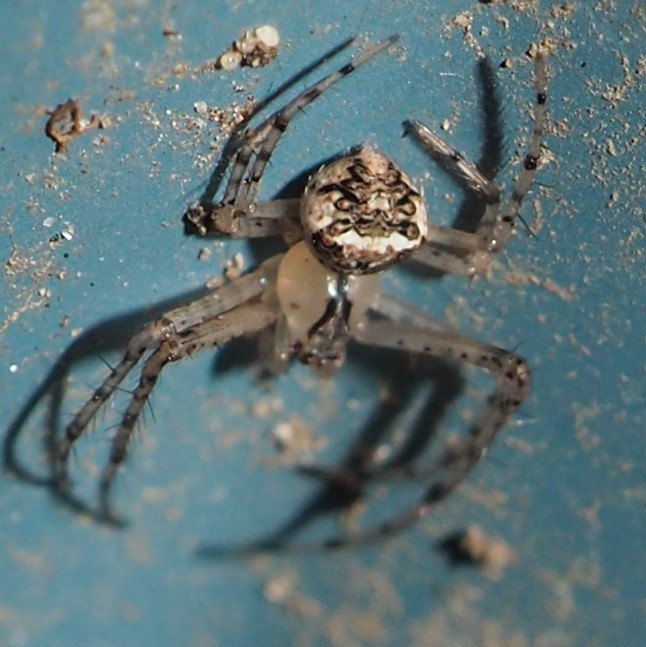

It's probably "just" another Sheetweb Spider, but I thought it was particularly beautiful, especially for the ballet-like poses it struck. It looked black before the flash kicked in.
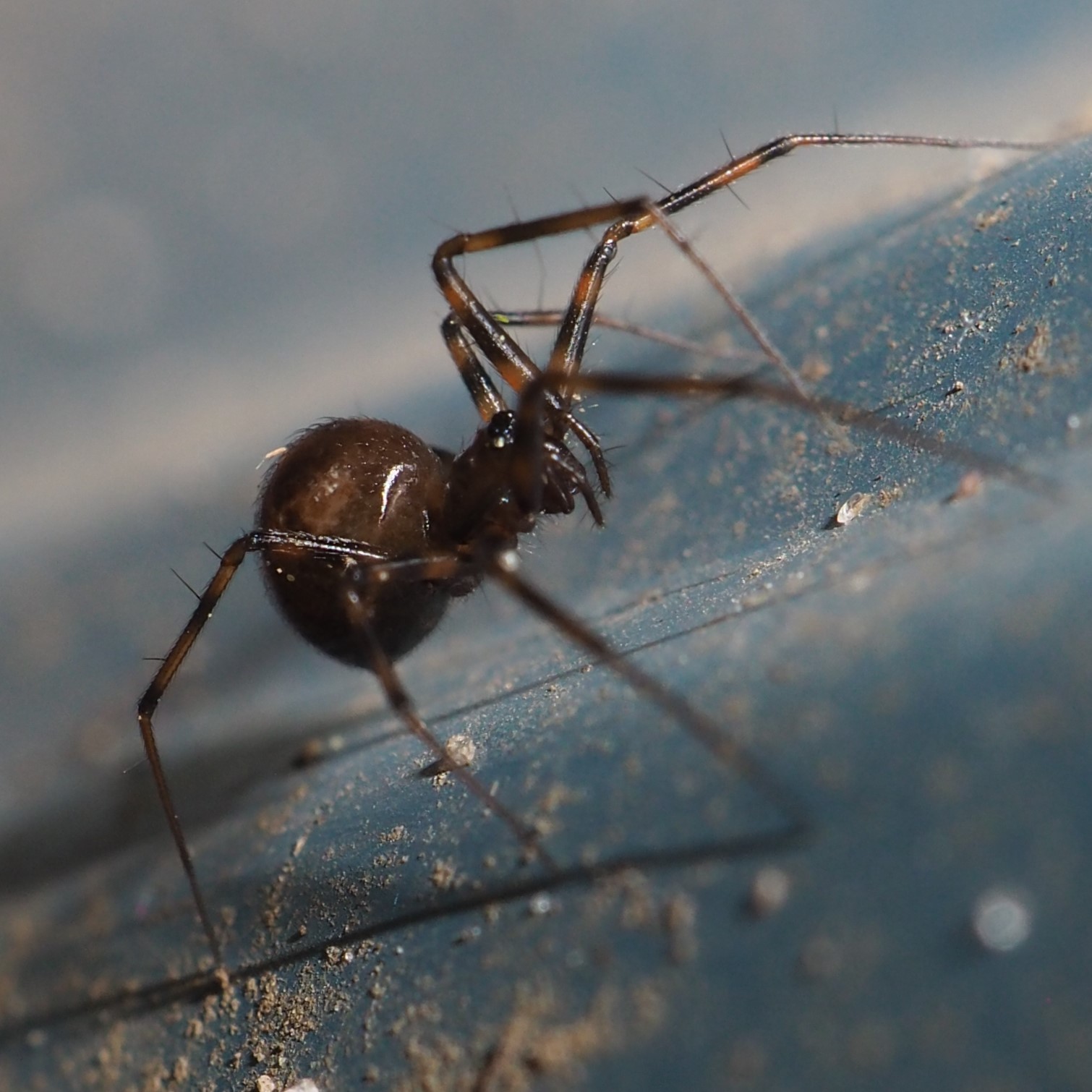
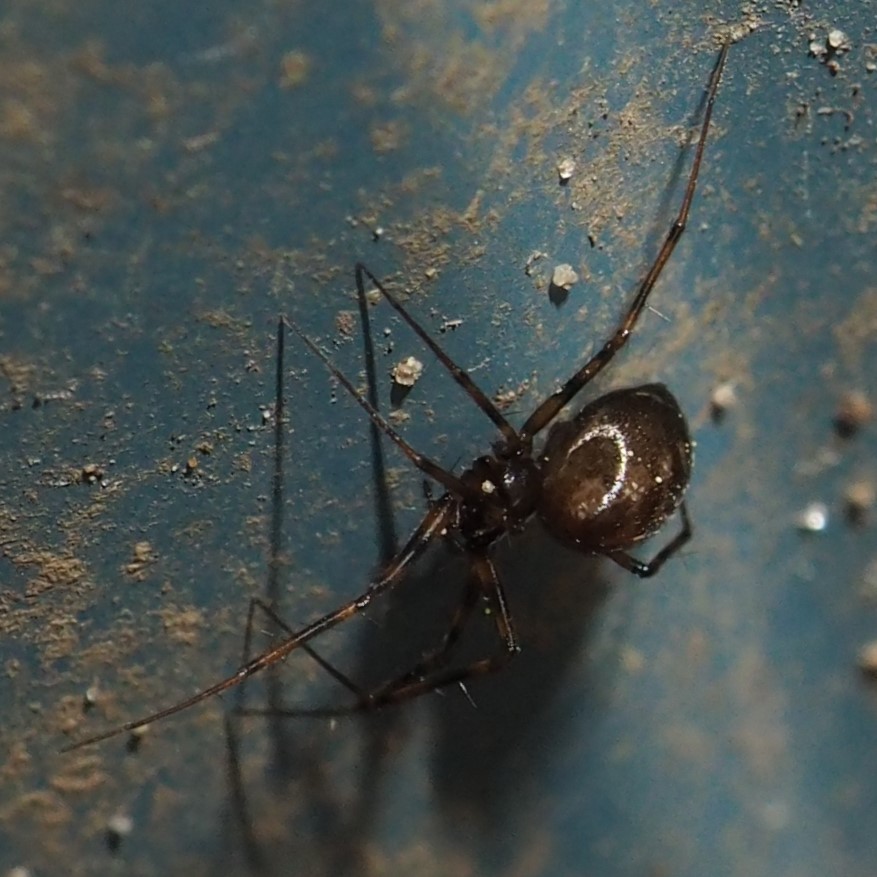
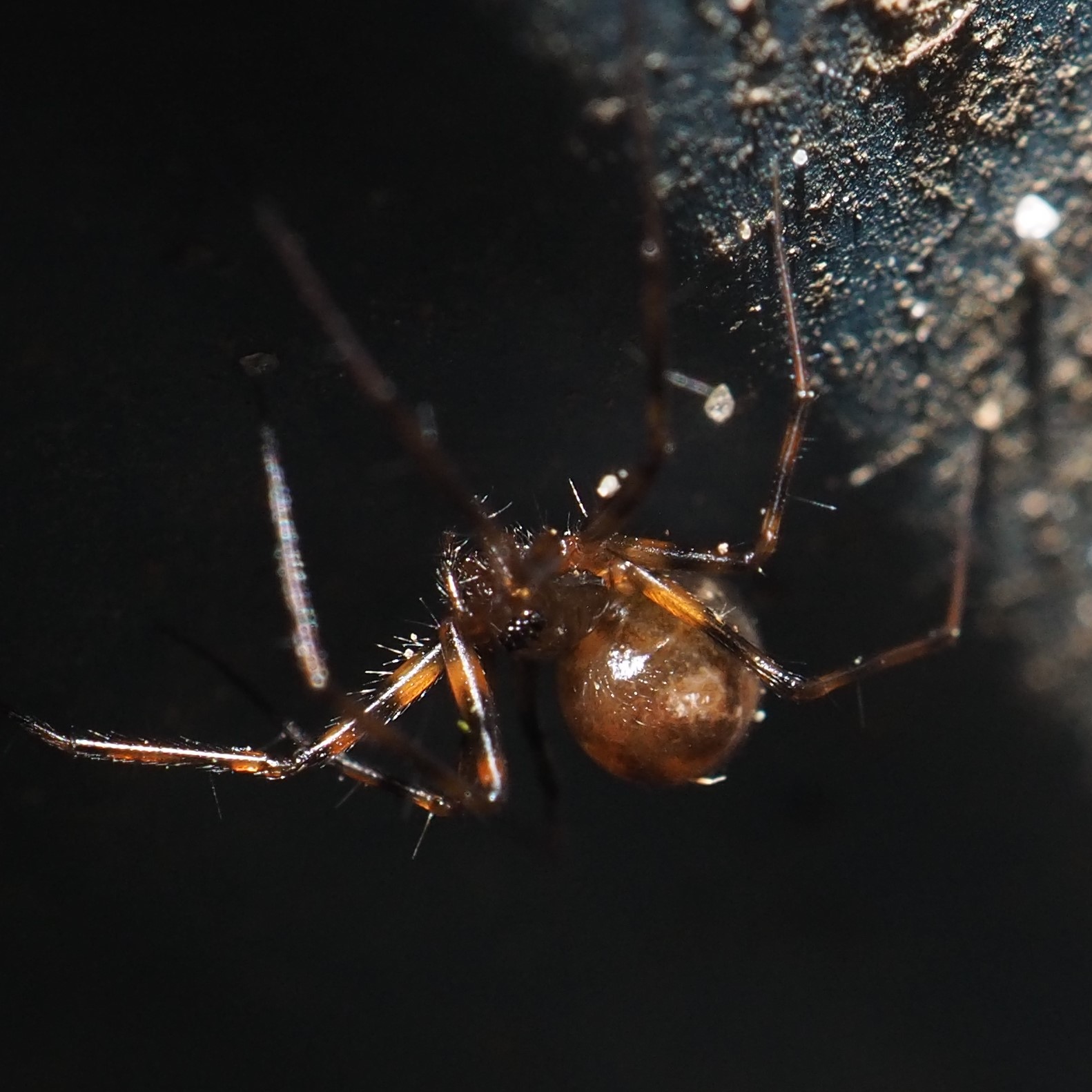
Here is a new one: a yellow spider with white spots.
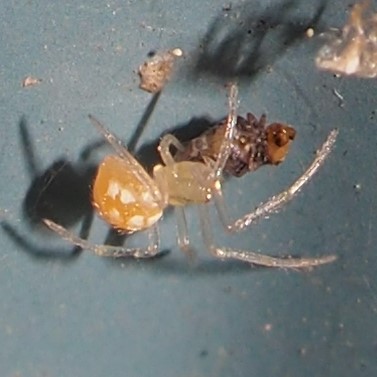
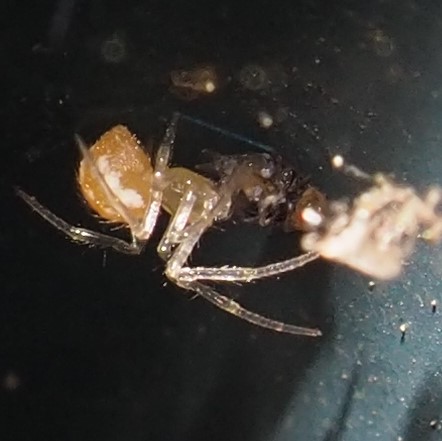
There were two brands of Crab Spiders that showed up this week. First, a Running Crab Spider. Second, one of those spiders that I always used to lump together as Ground Crab Spiders. Picture 3 is a head-on shot of the second spider. That angle makes it look as if the head is totally flat, but the top view says differently. I'm struggling to find the discussion of this topic in BG, but having no luck. Definitely homework for next week!
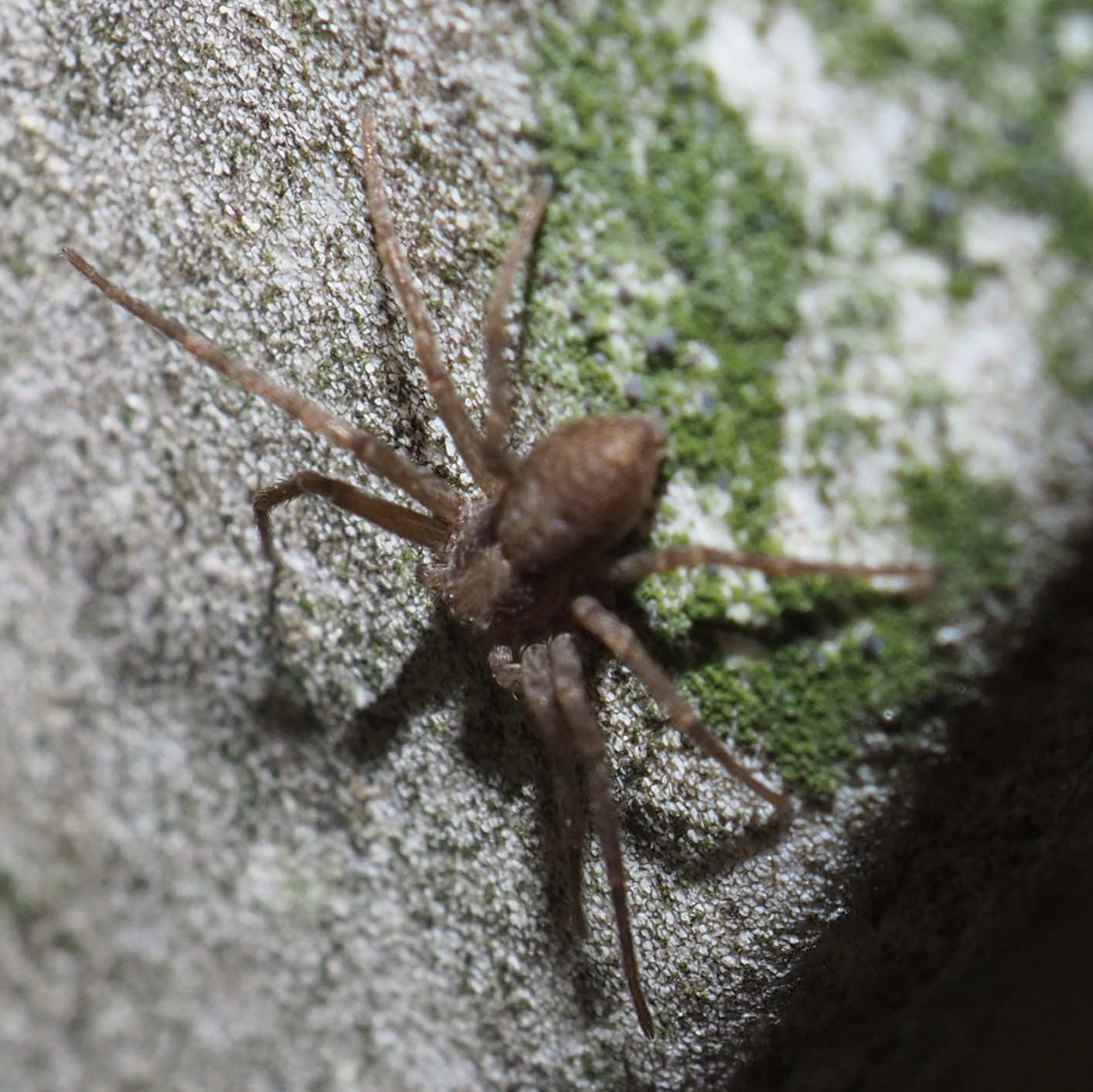
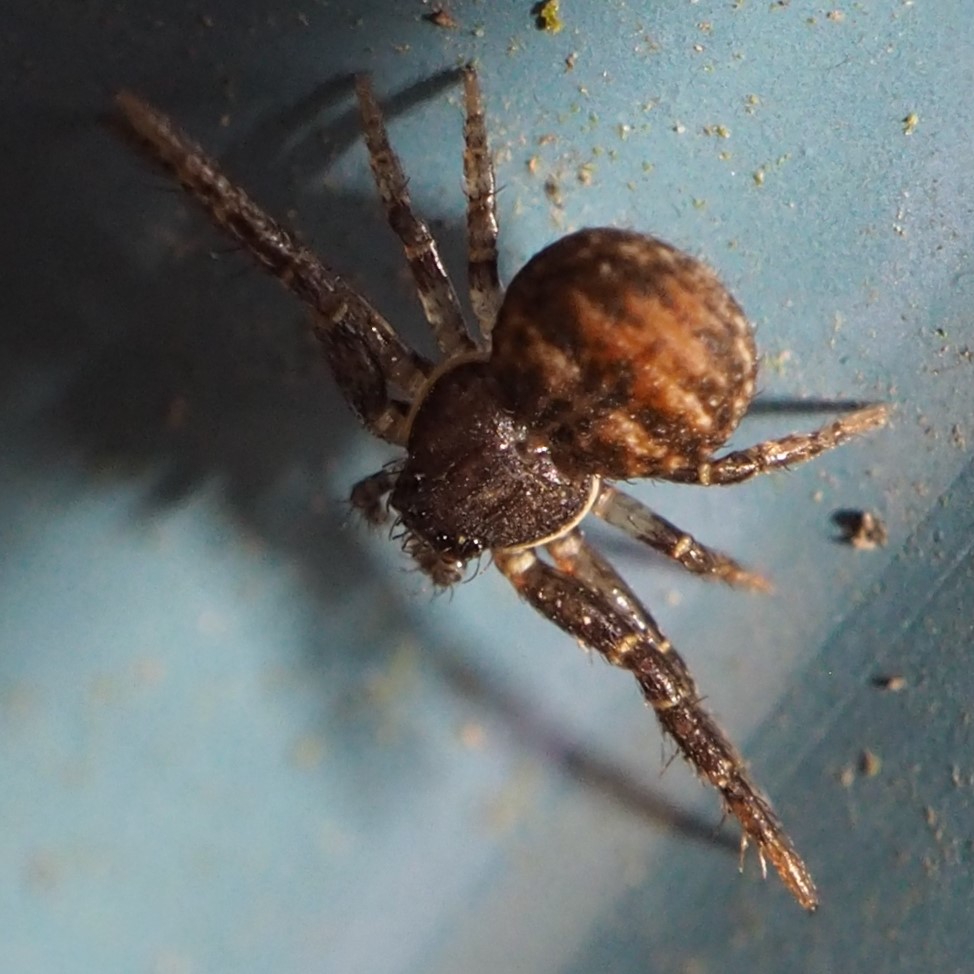
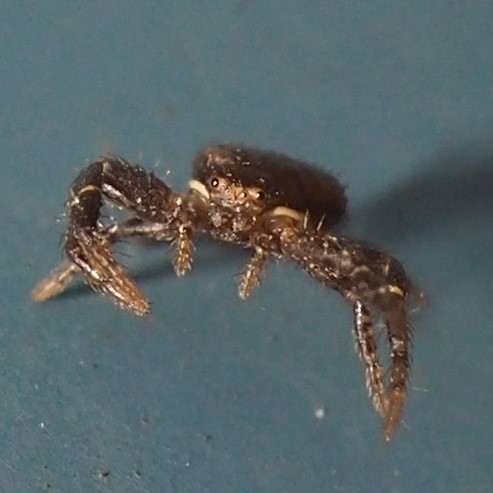
That was a pretty good bunch of spiders for one week. So I think it is finally time for me to wrap up this week's offering. (It's Monday morning!) We may not see the tulips and grape hyacinths much longer, though they had a really good run this spring. So here is what's likely to be our last chance.
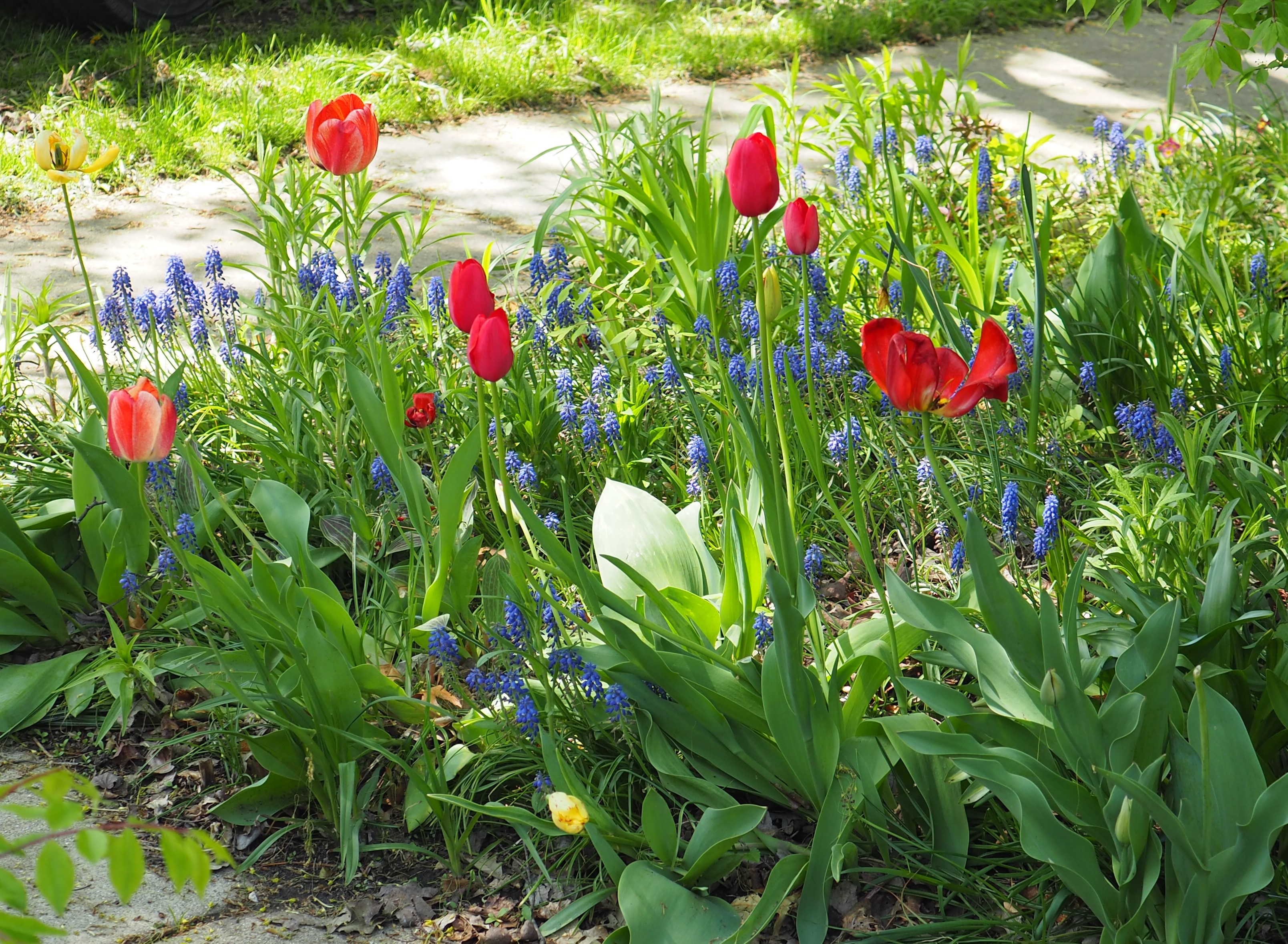
So at the end of a lovely exciting week, I hope everyone is looking forward to some fine weather (we deserve it!) and that life is as good as we can make it. Take care!
Love, Martha
Back to May 12, 2019
Forward to May 26, 2019
Back to main menu
copyright Martha O'Kennon 2019









































































